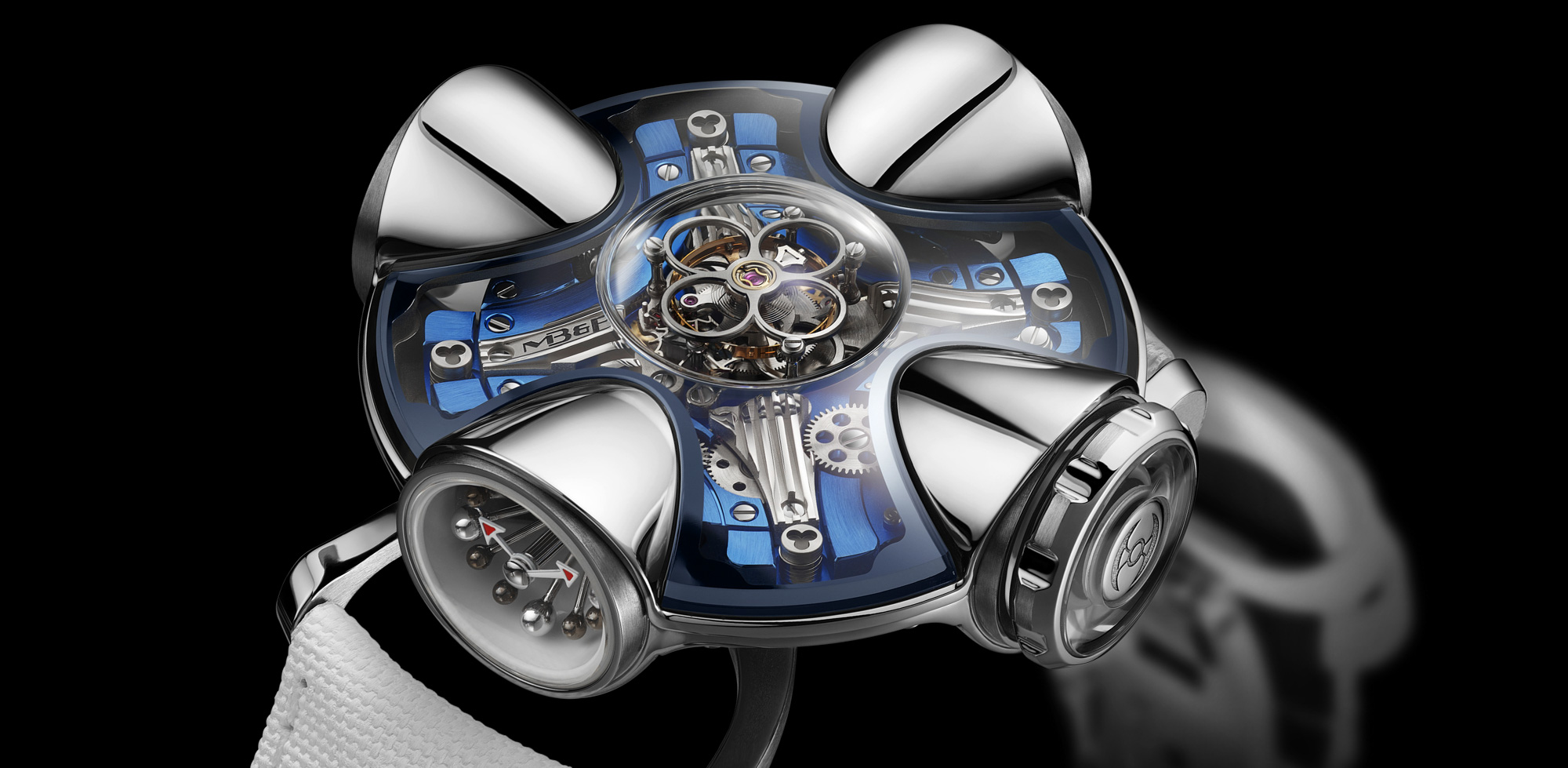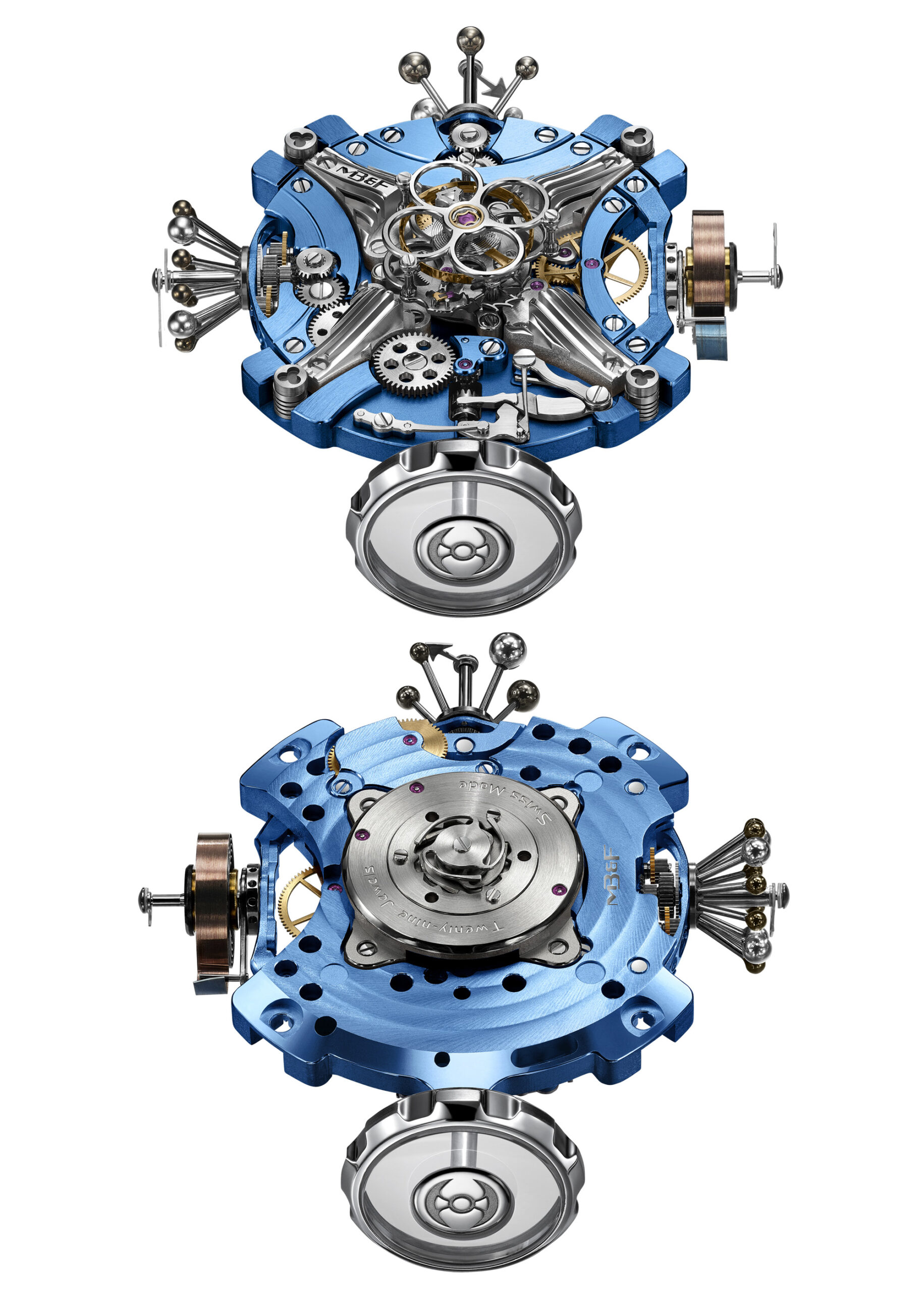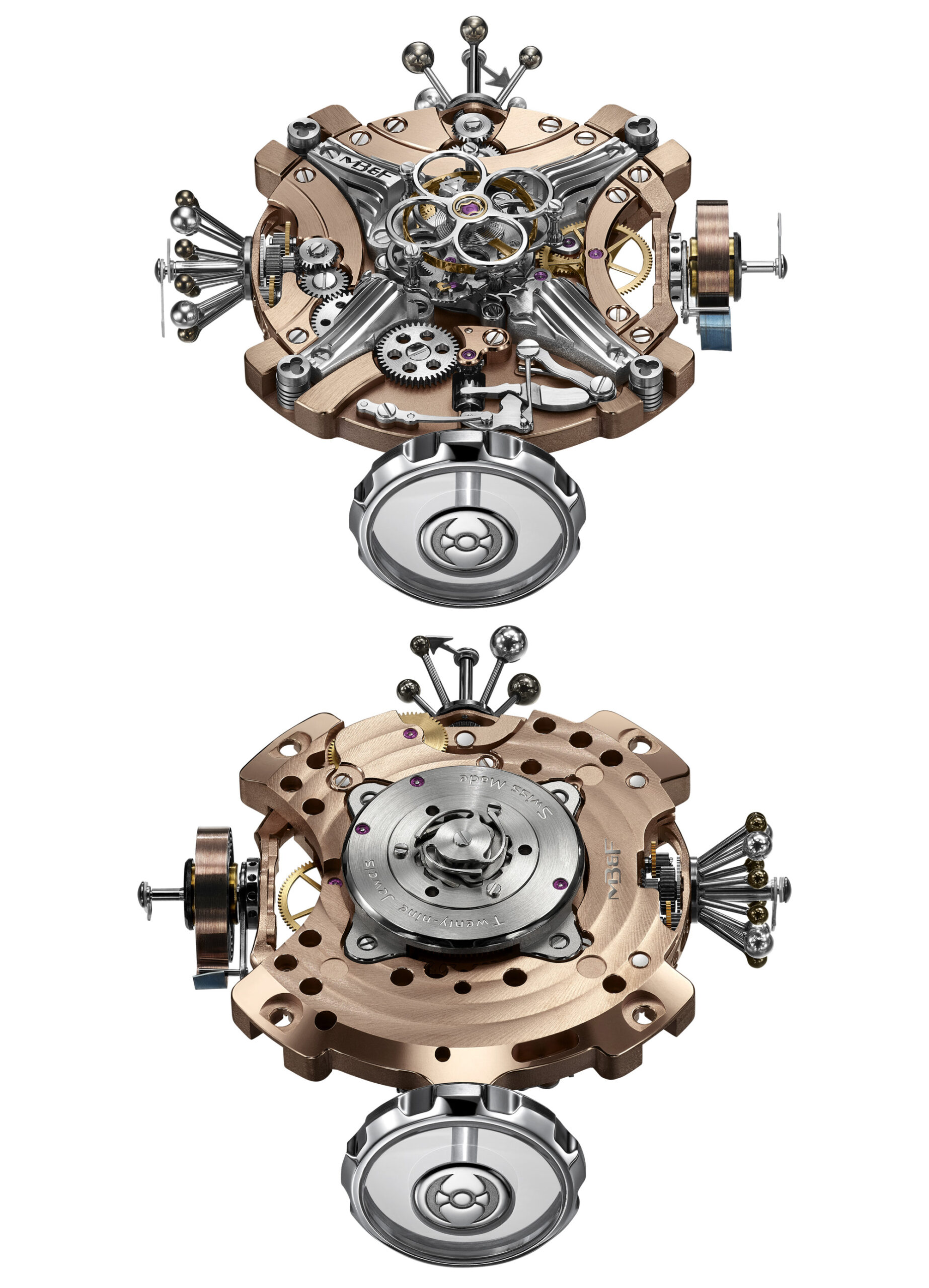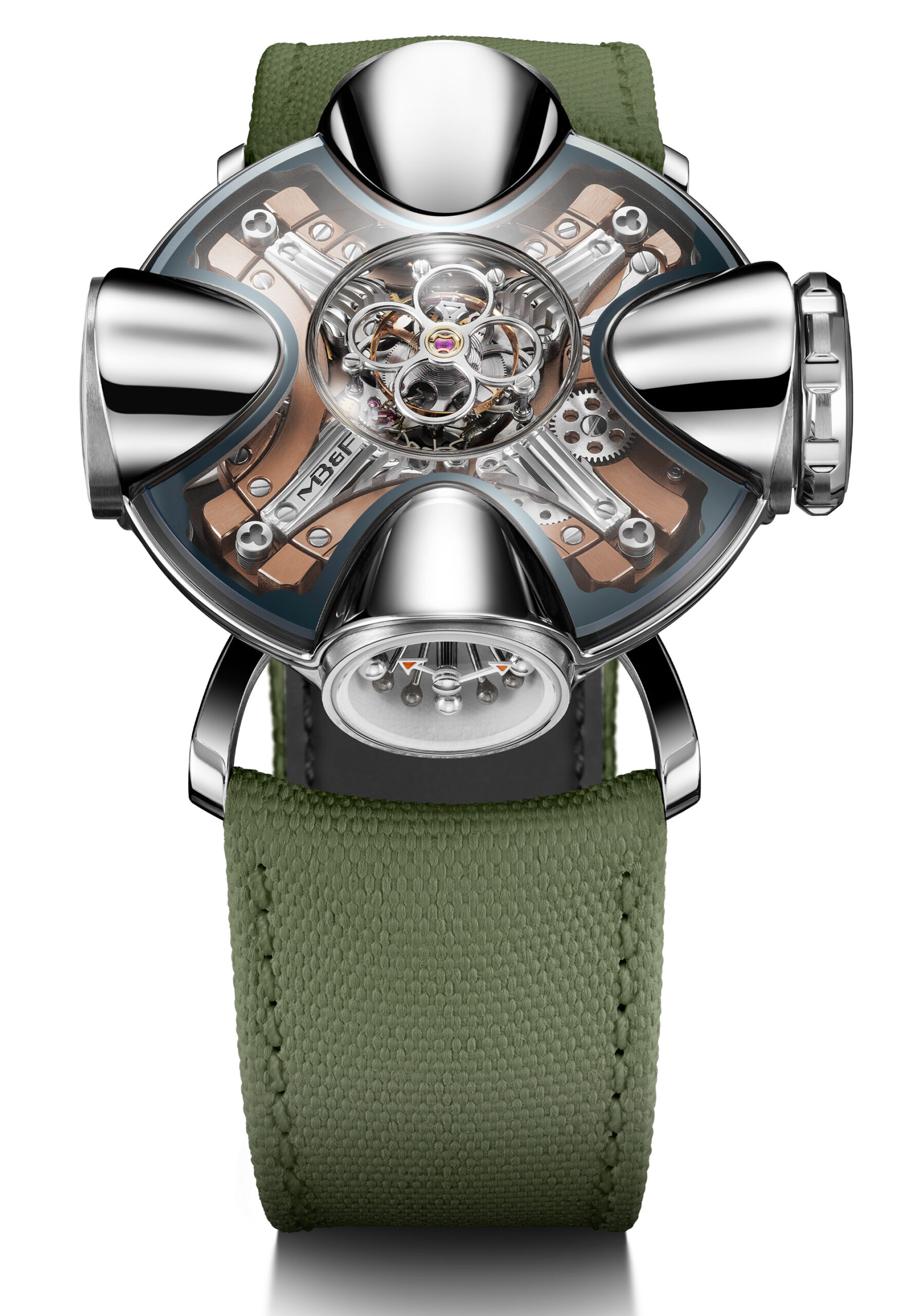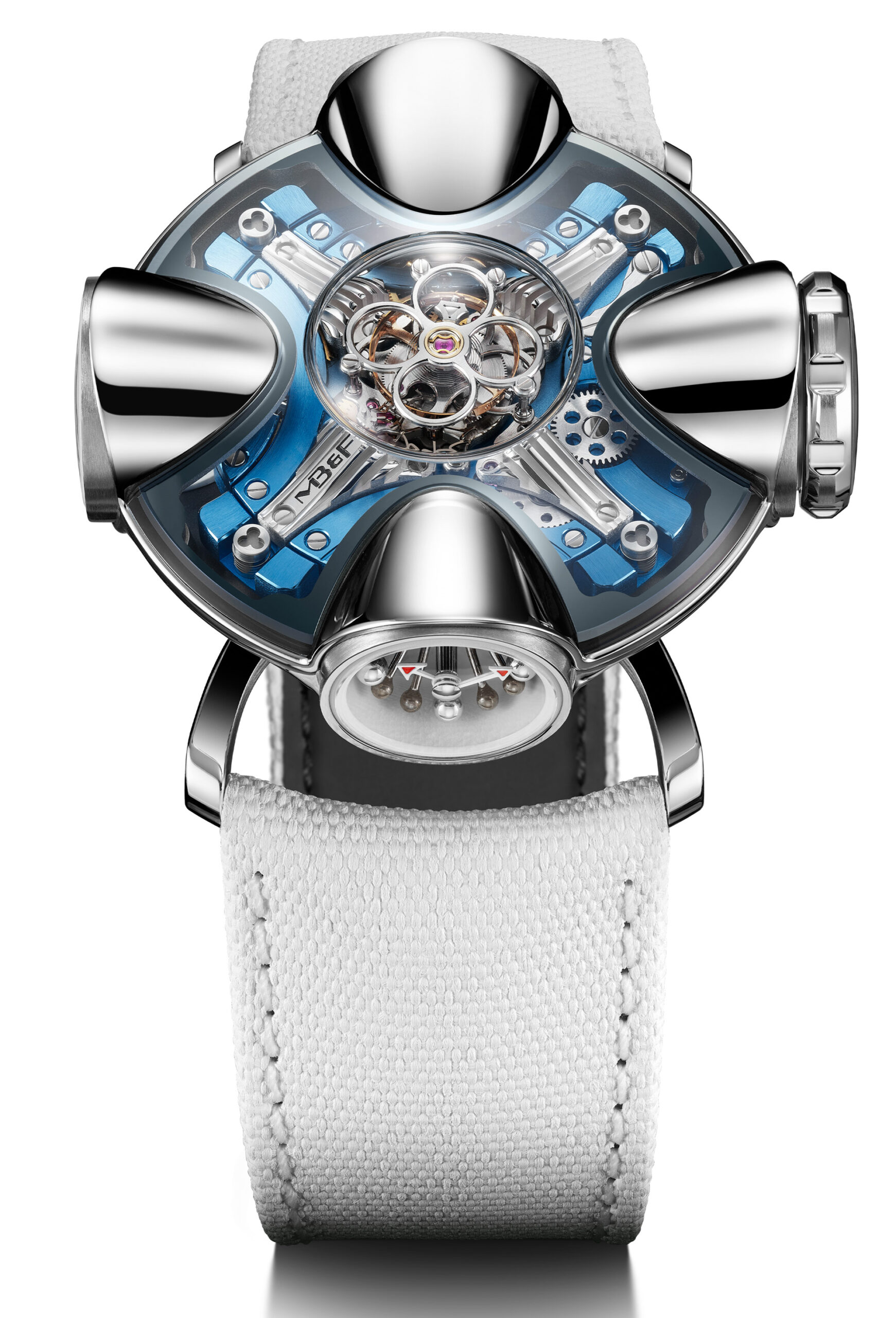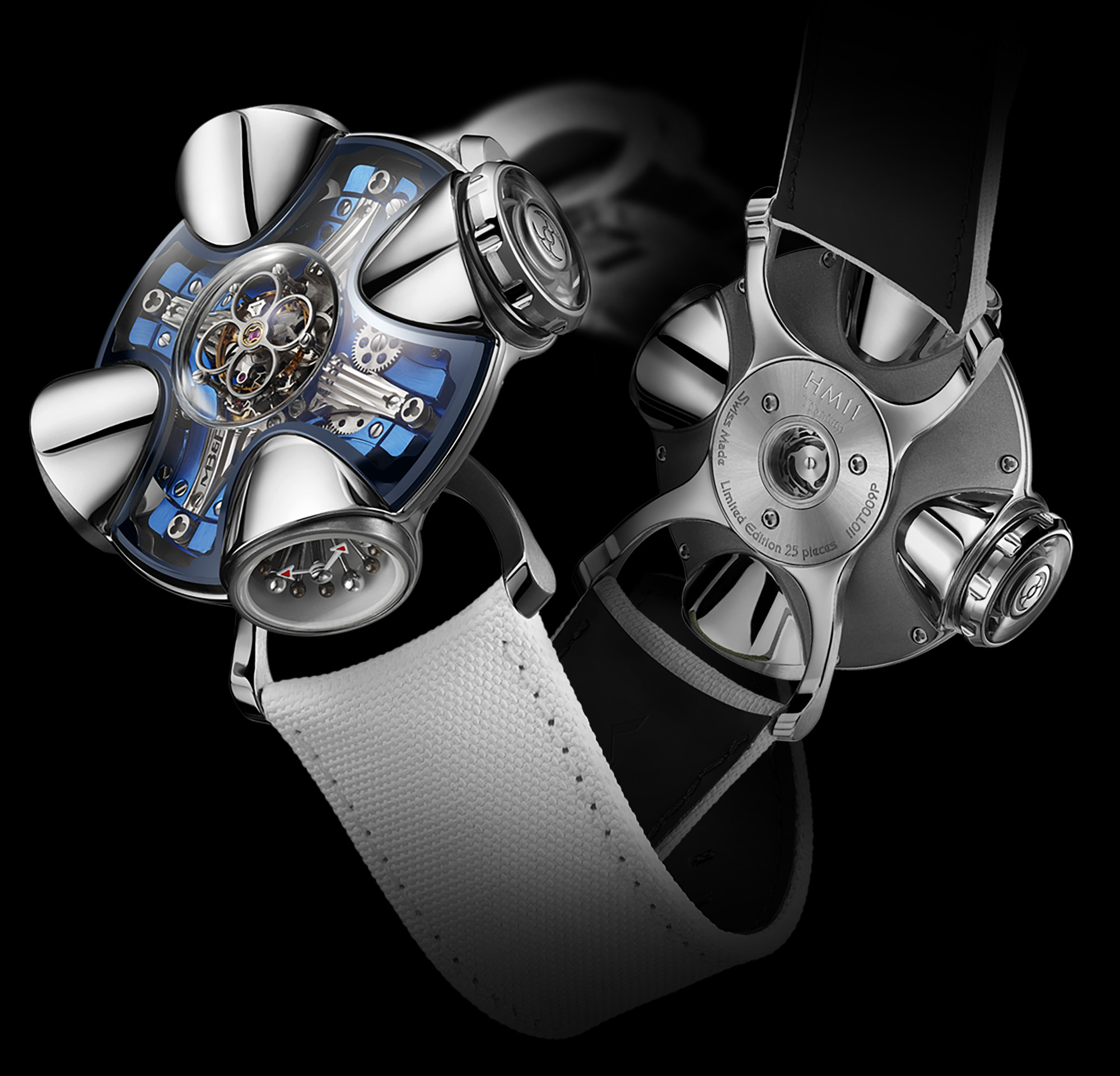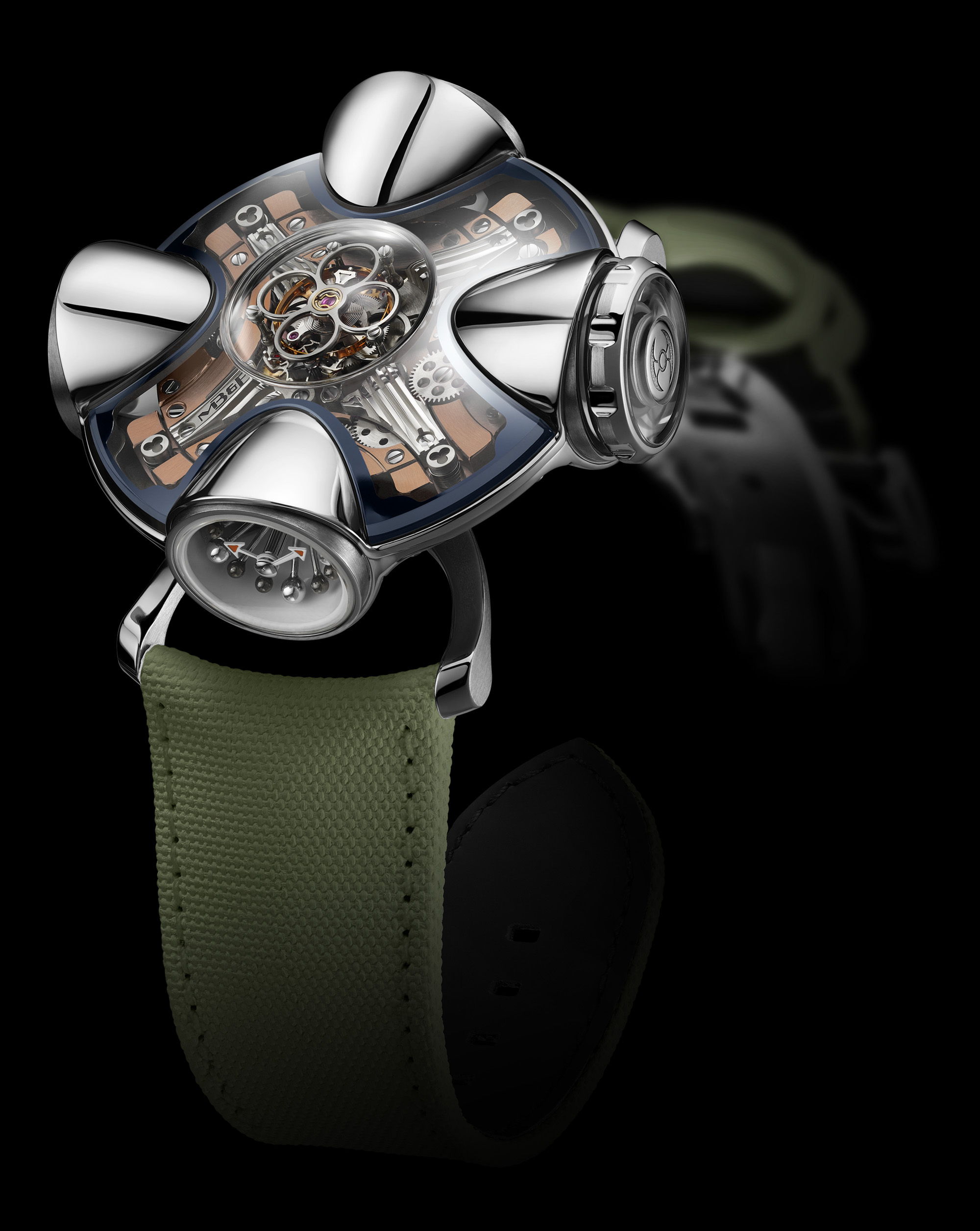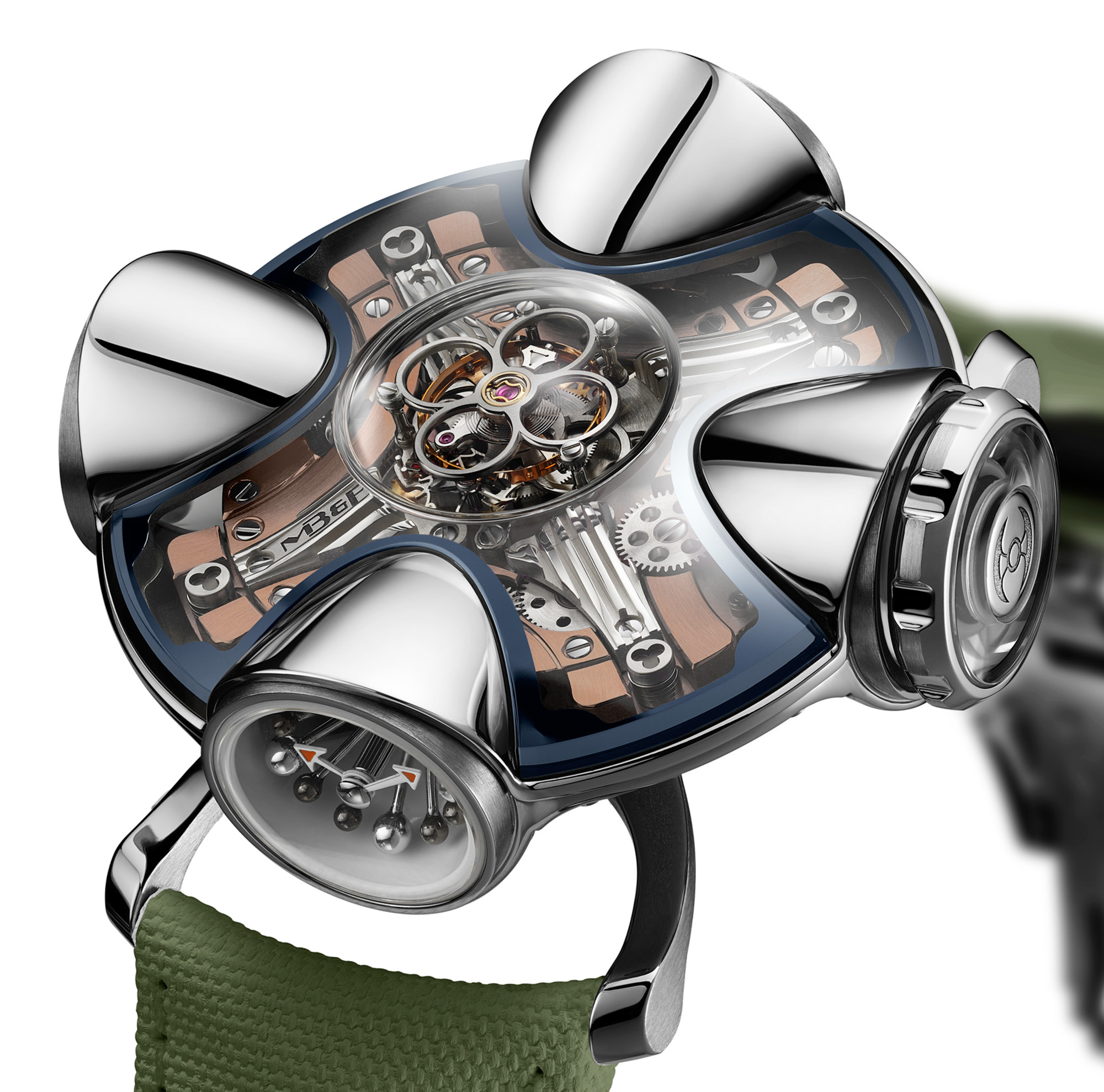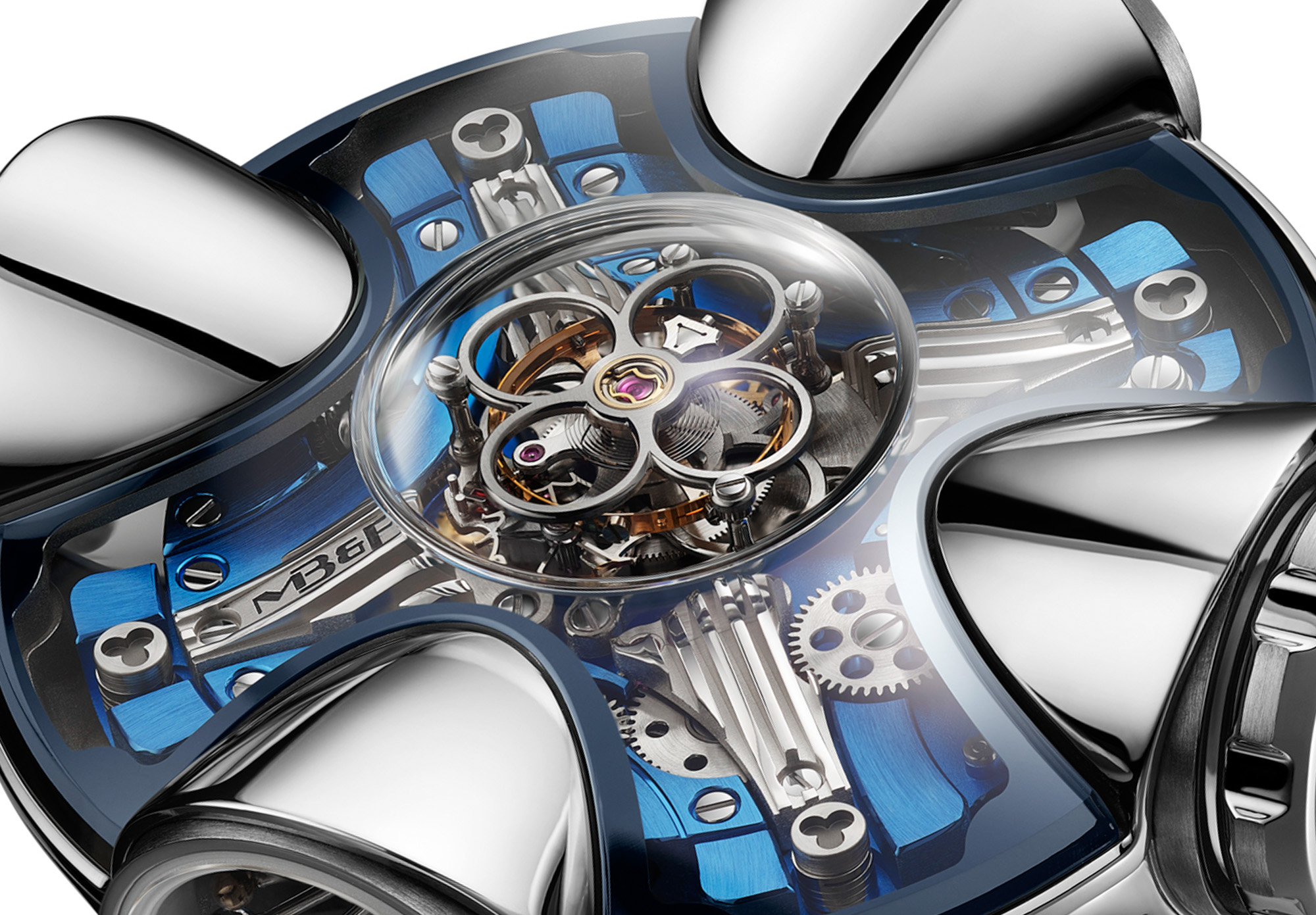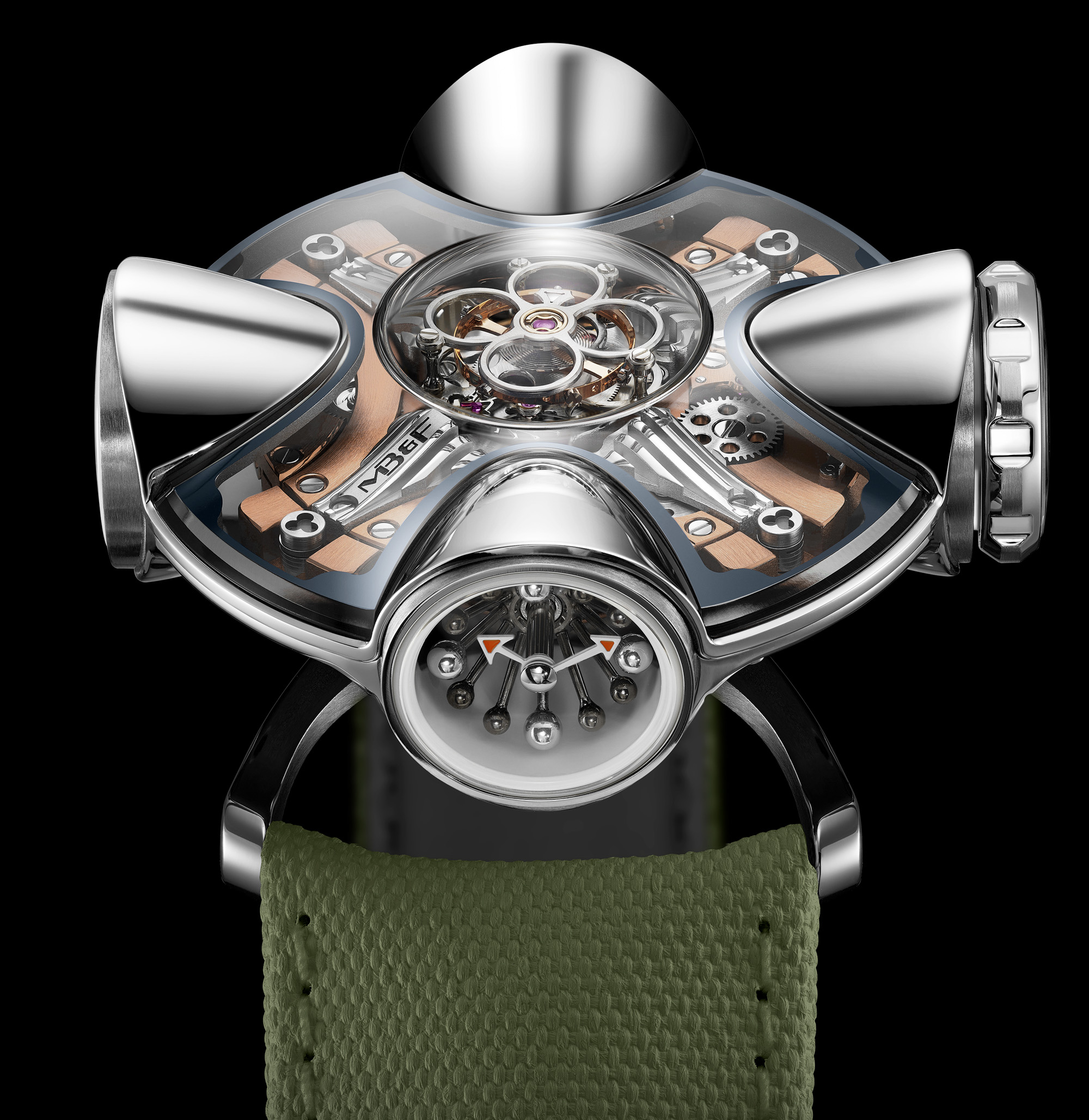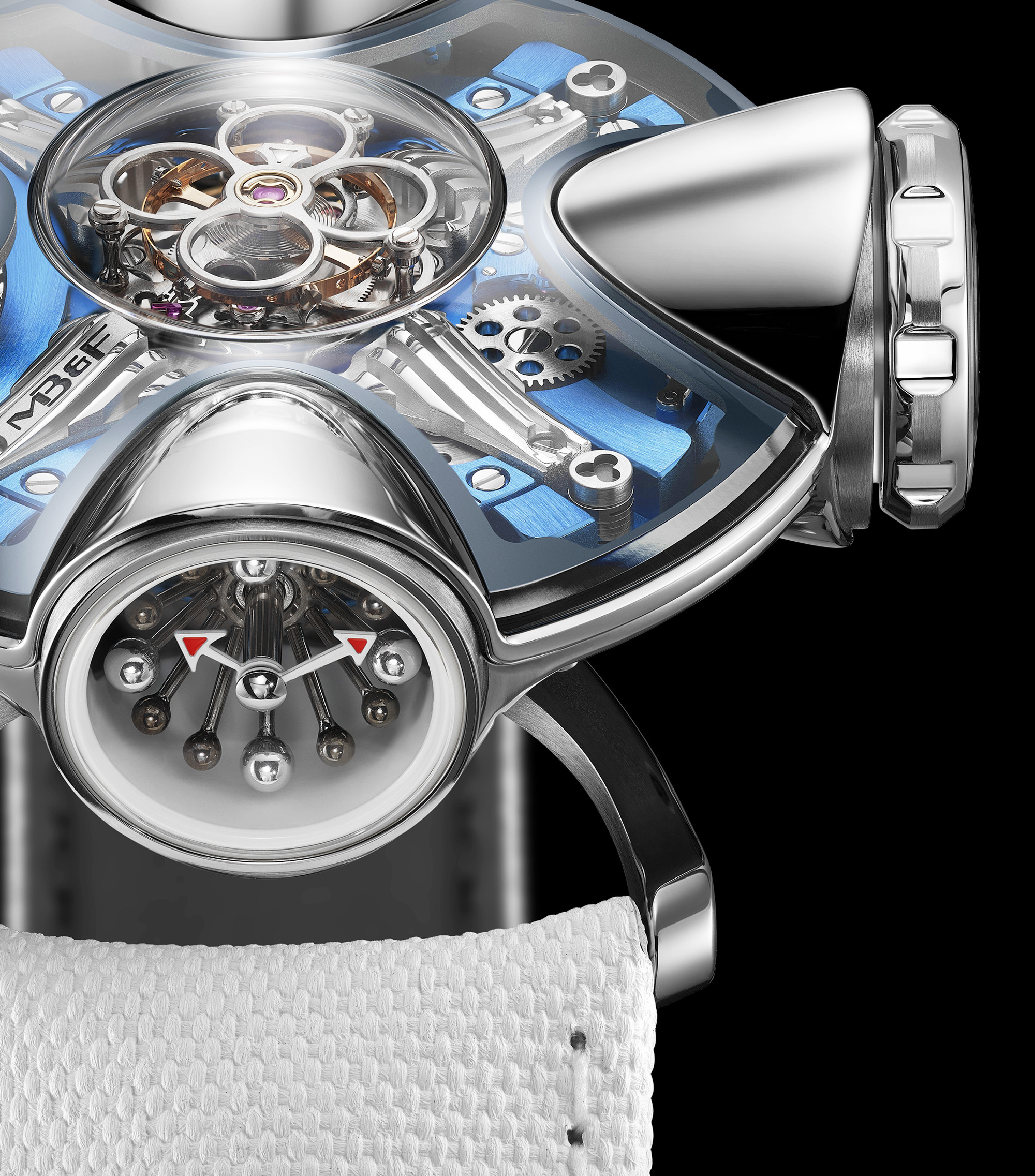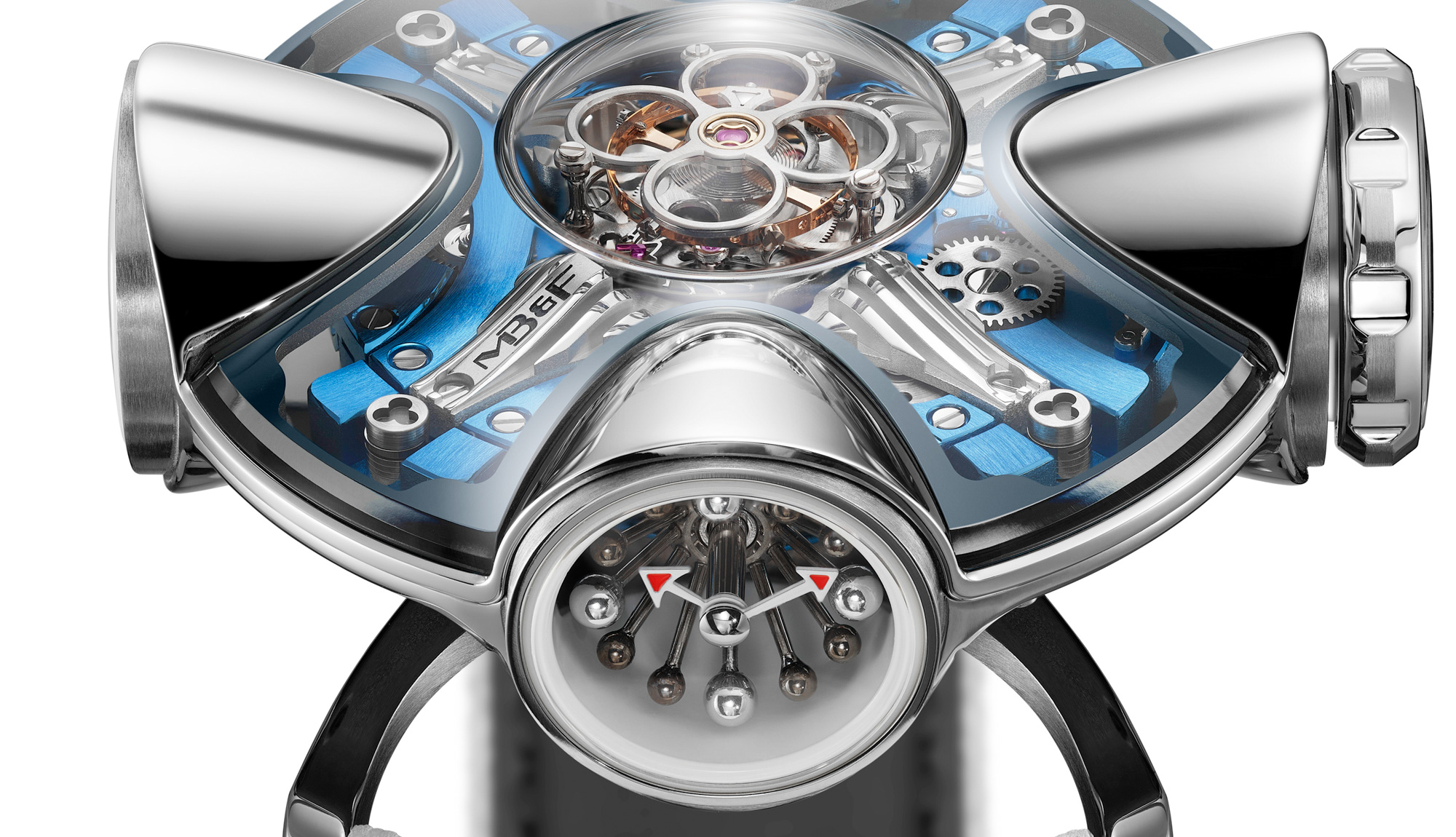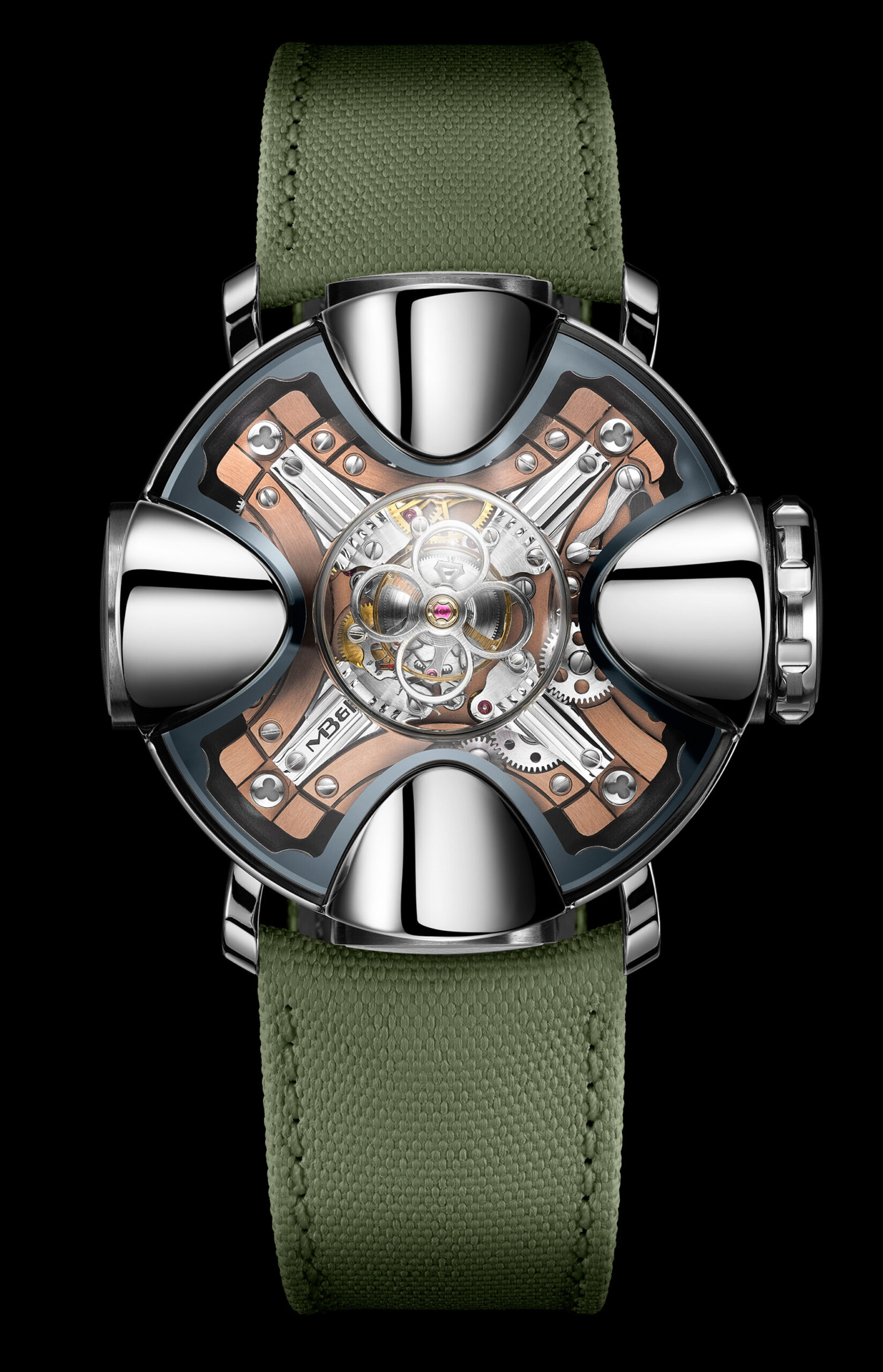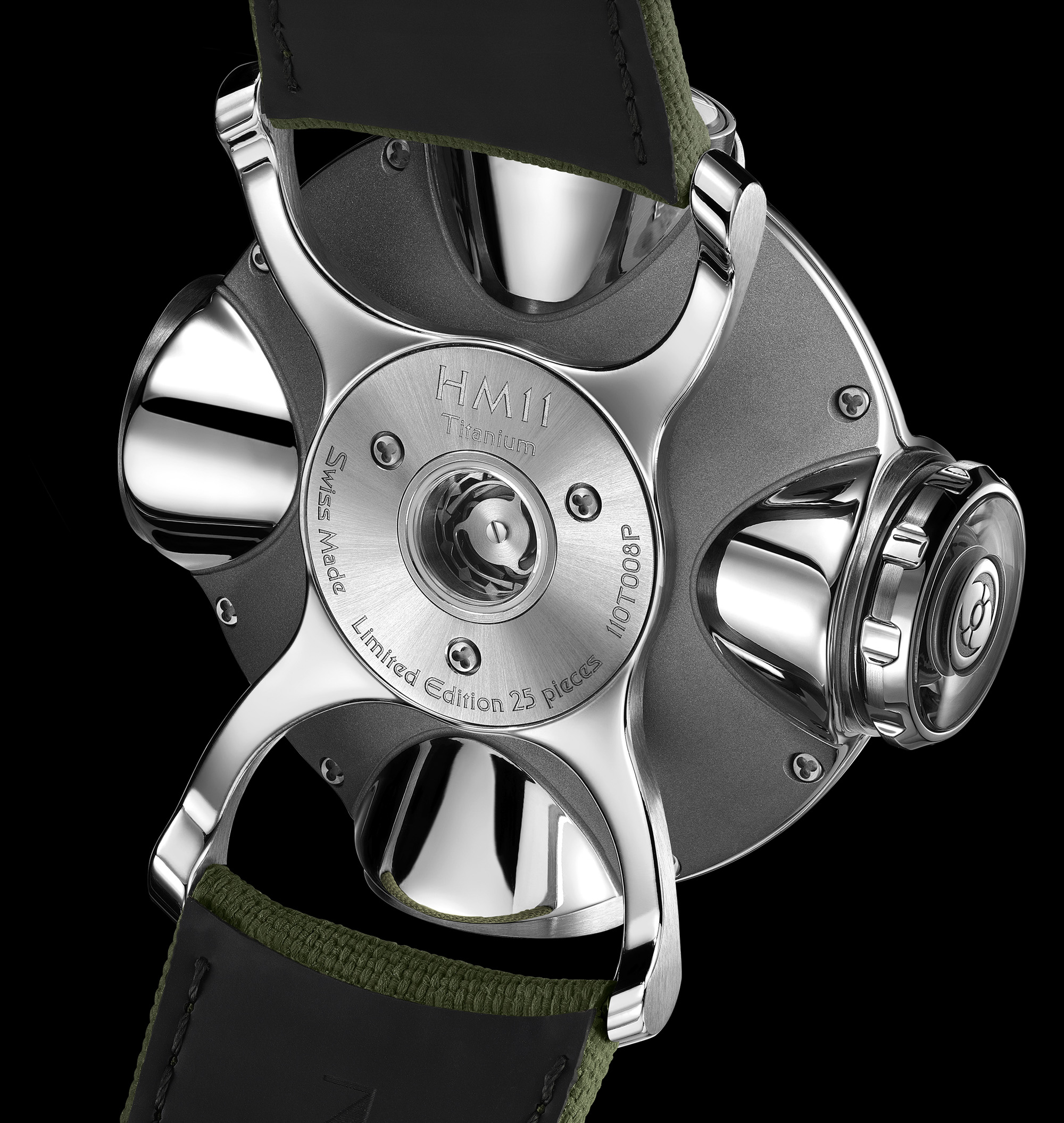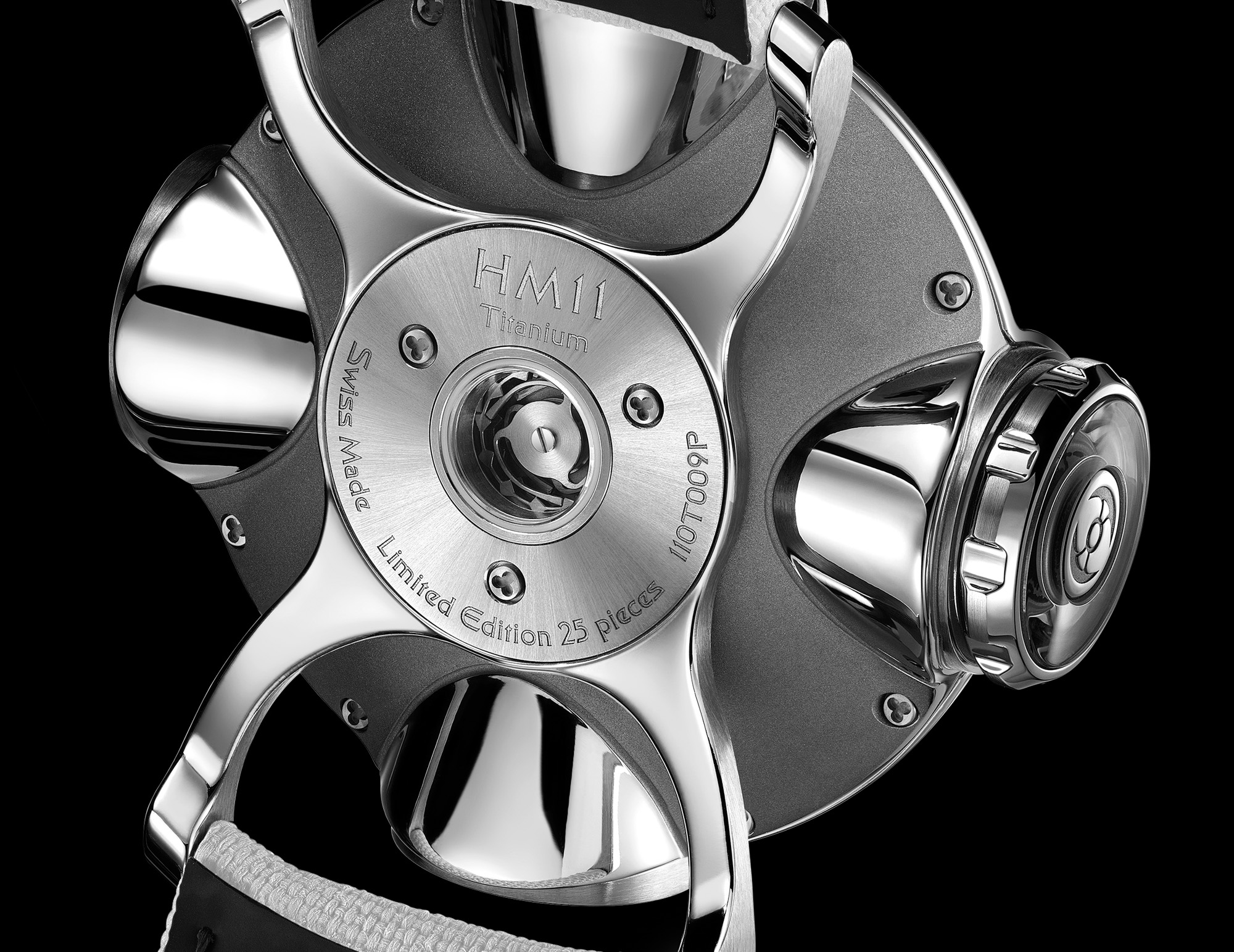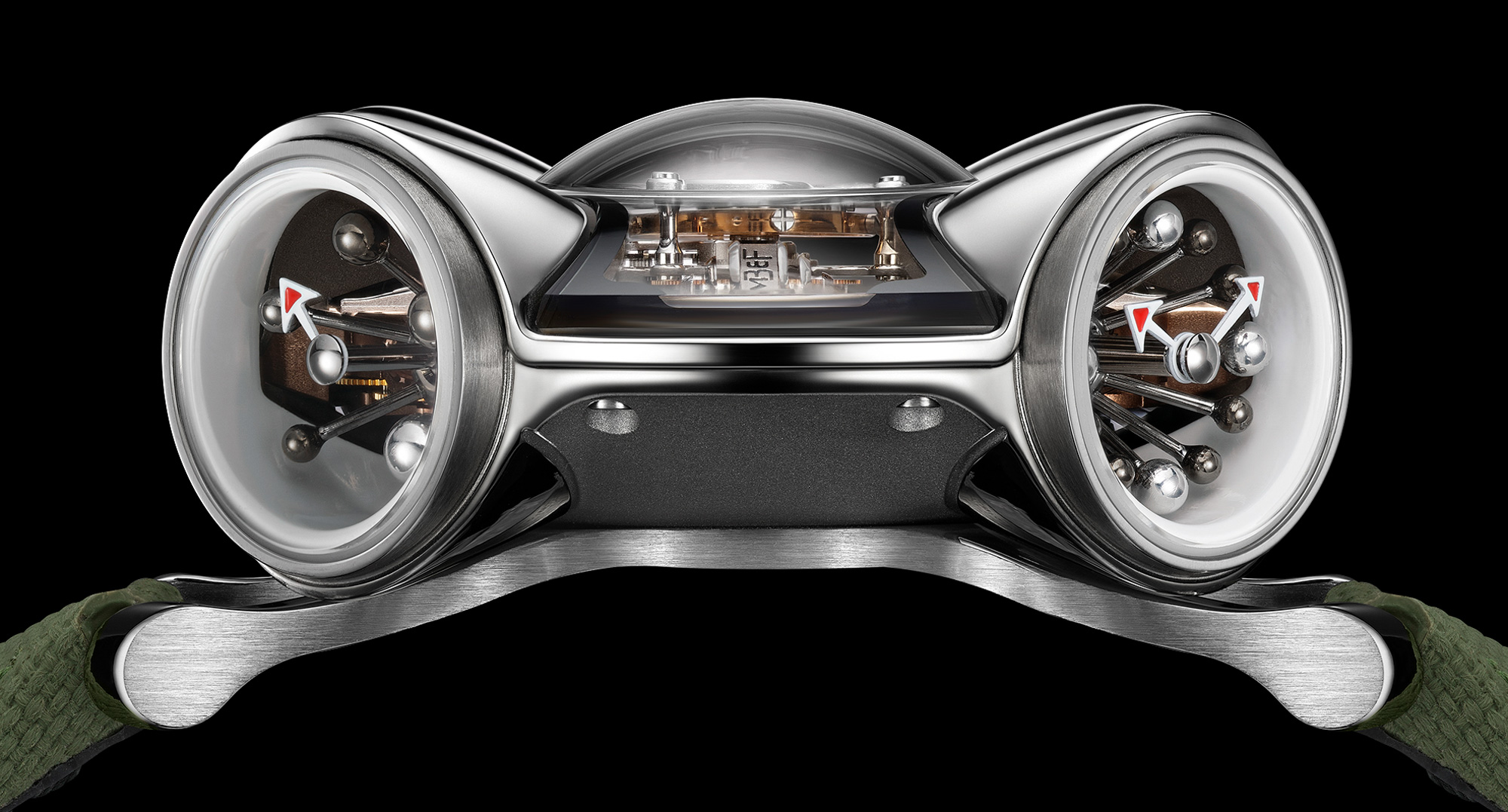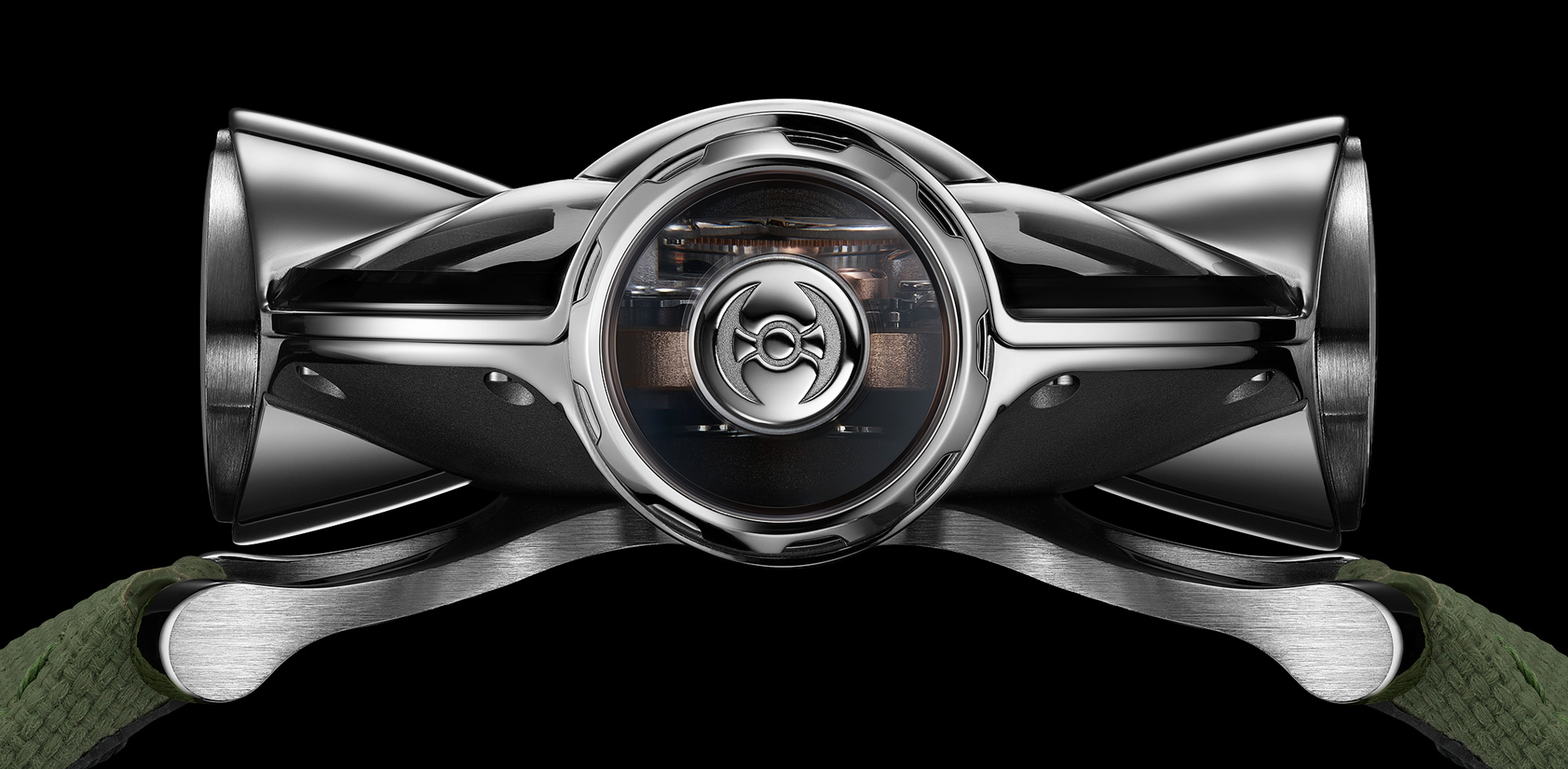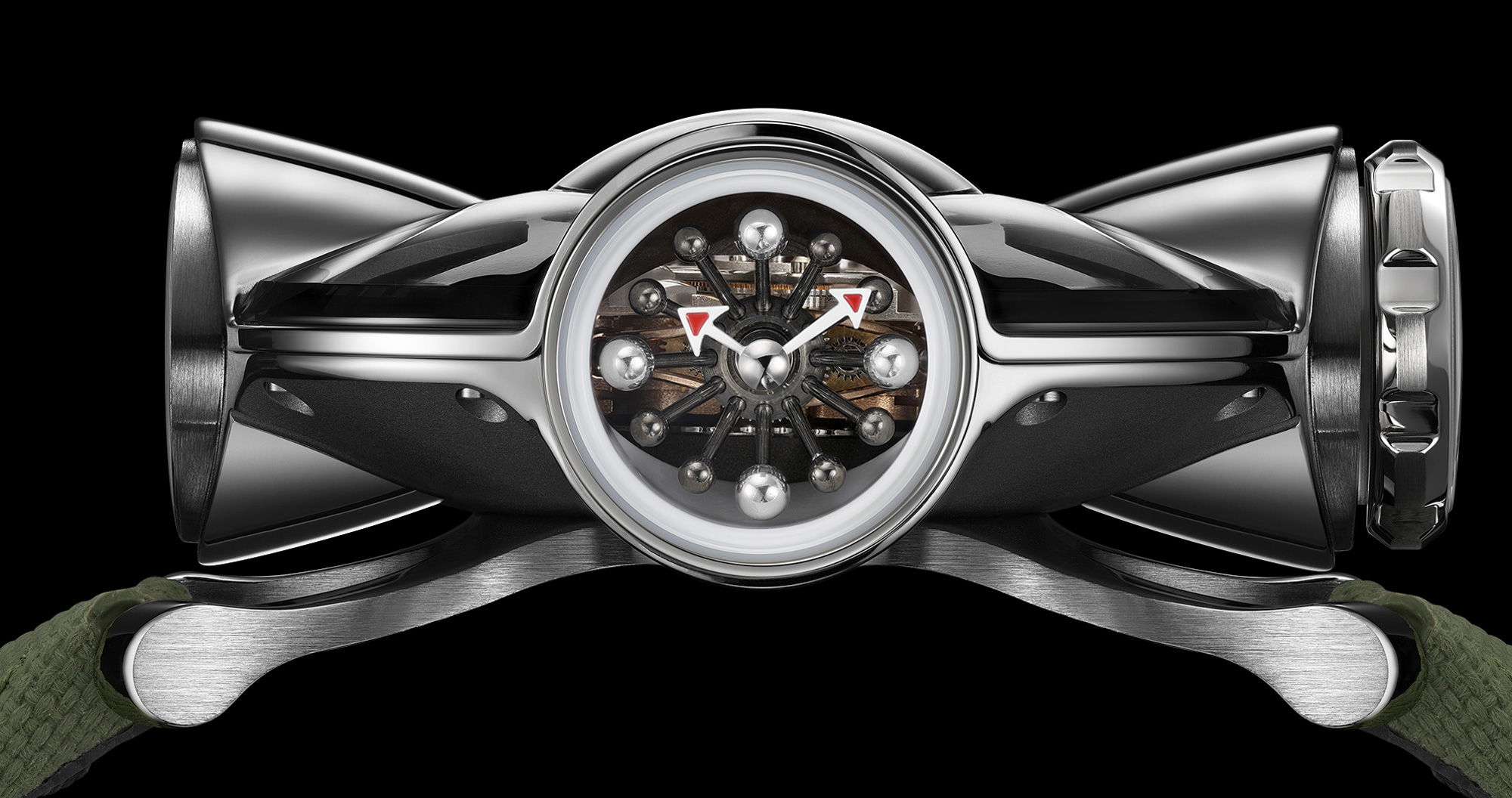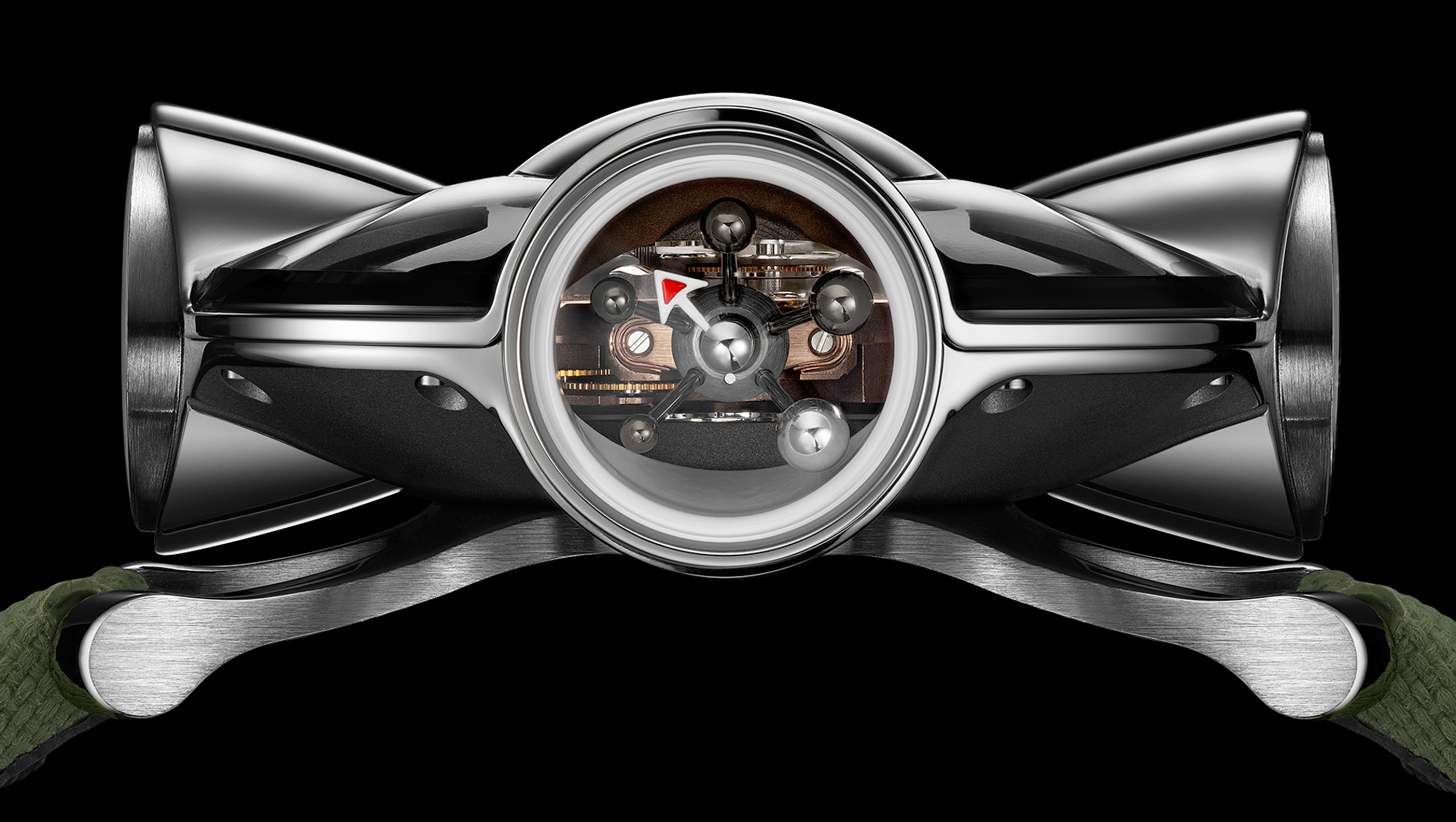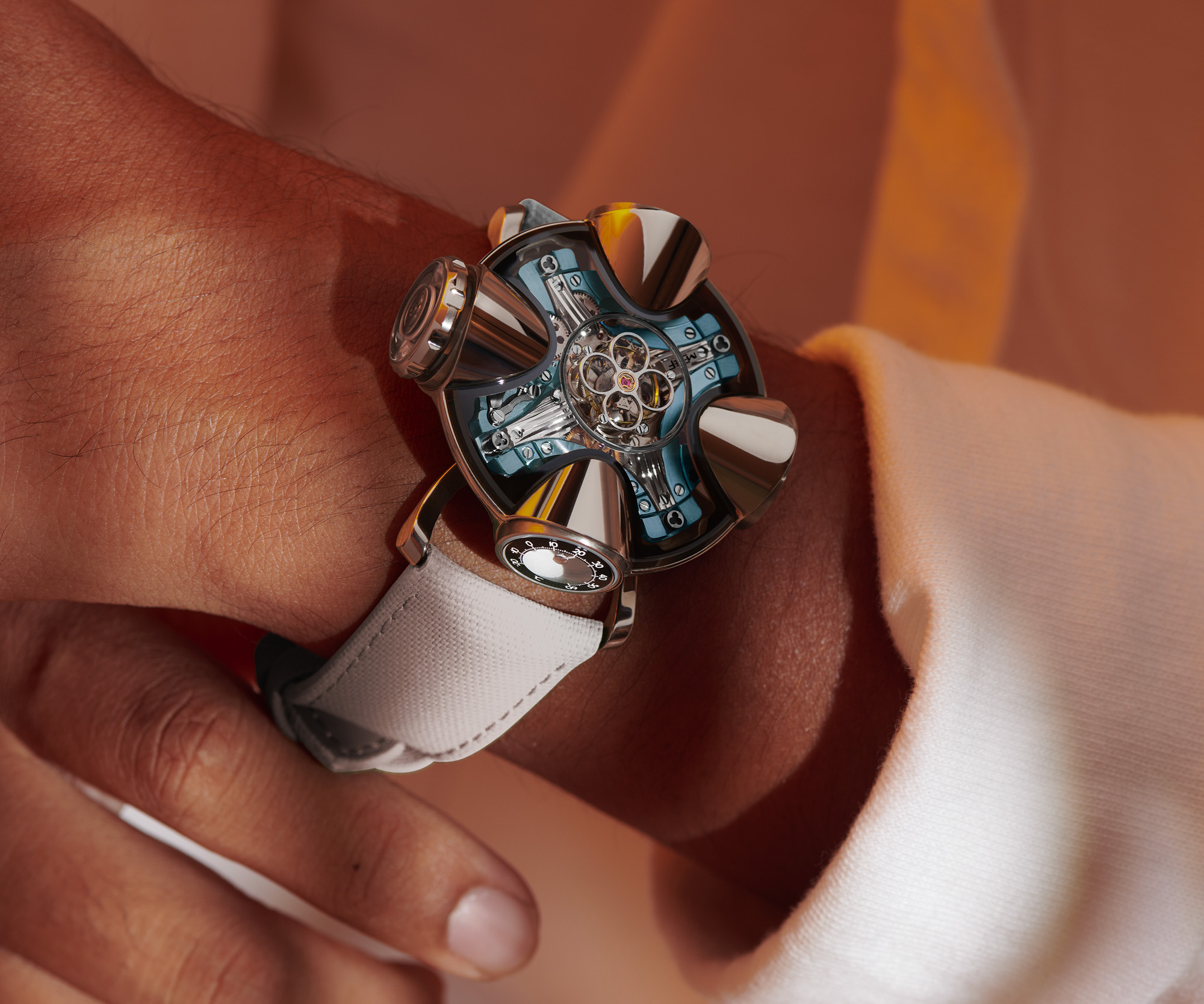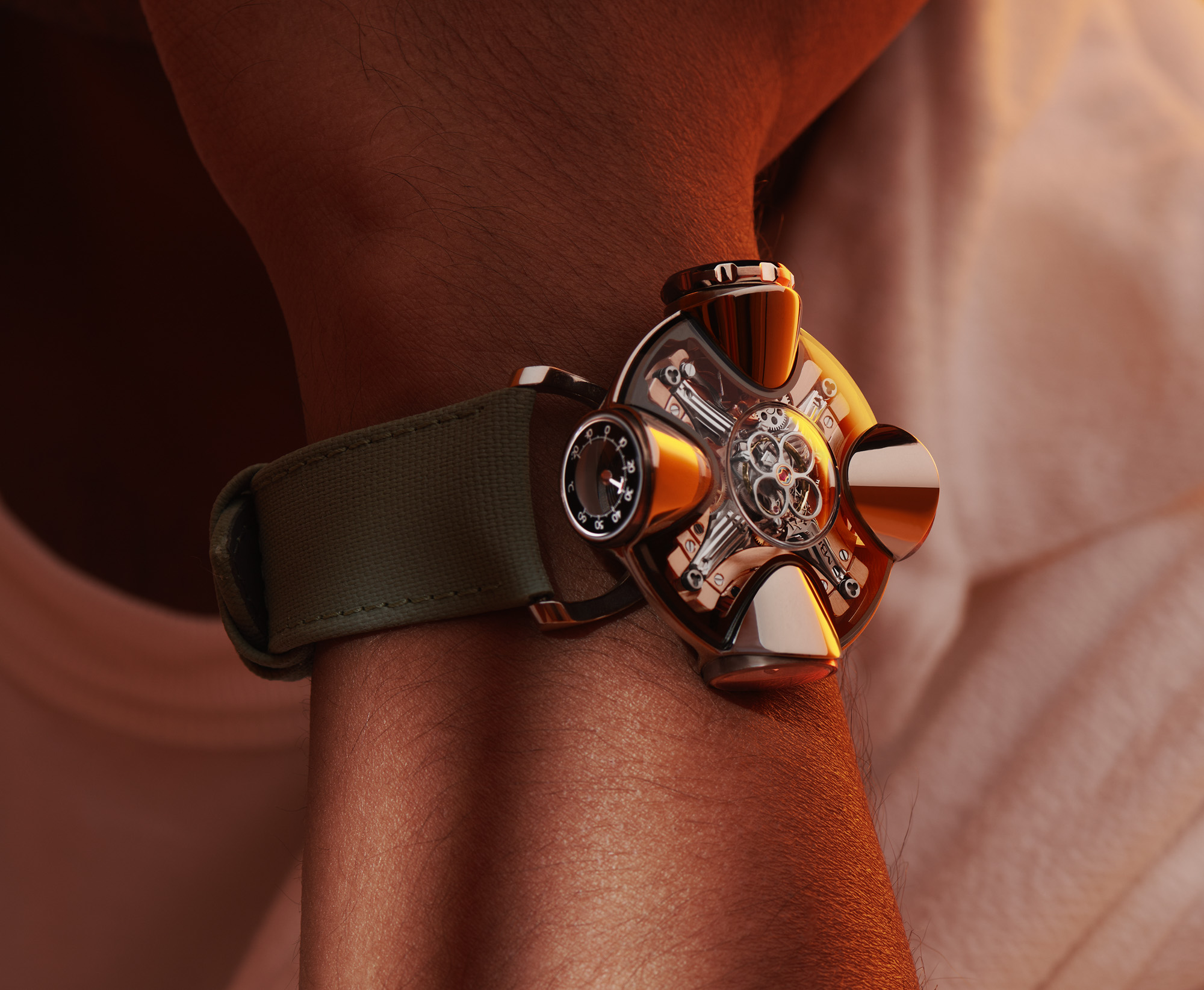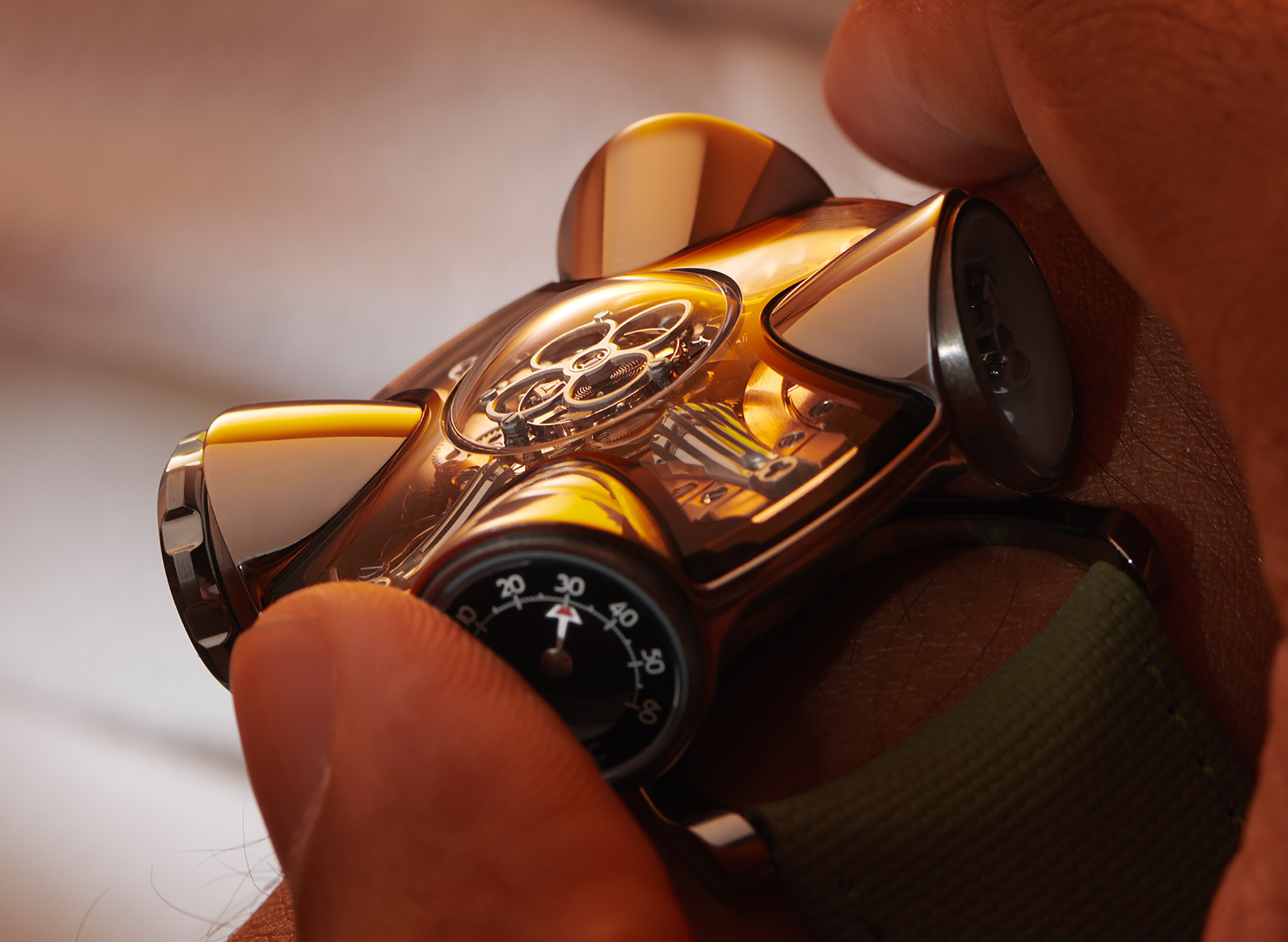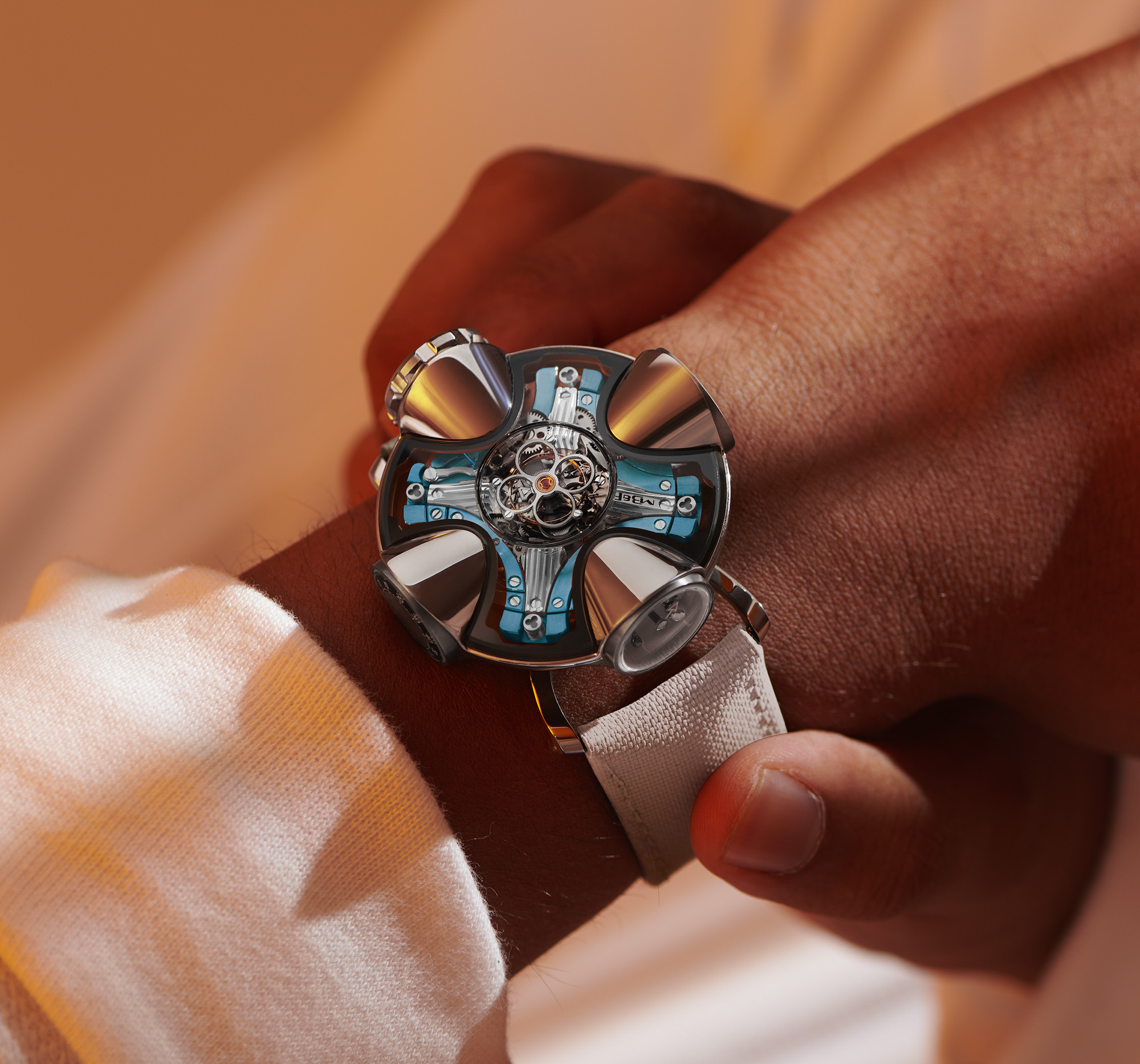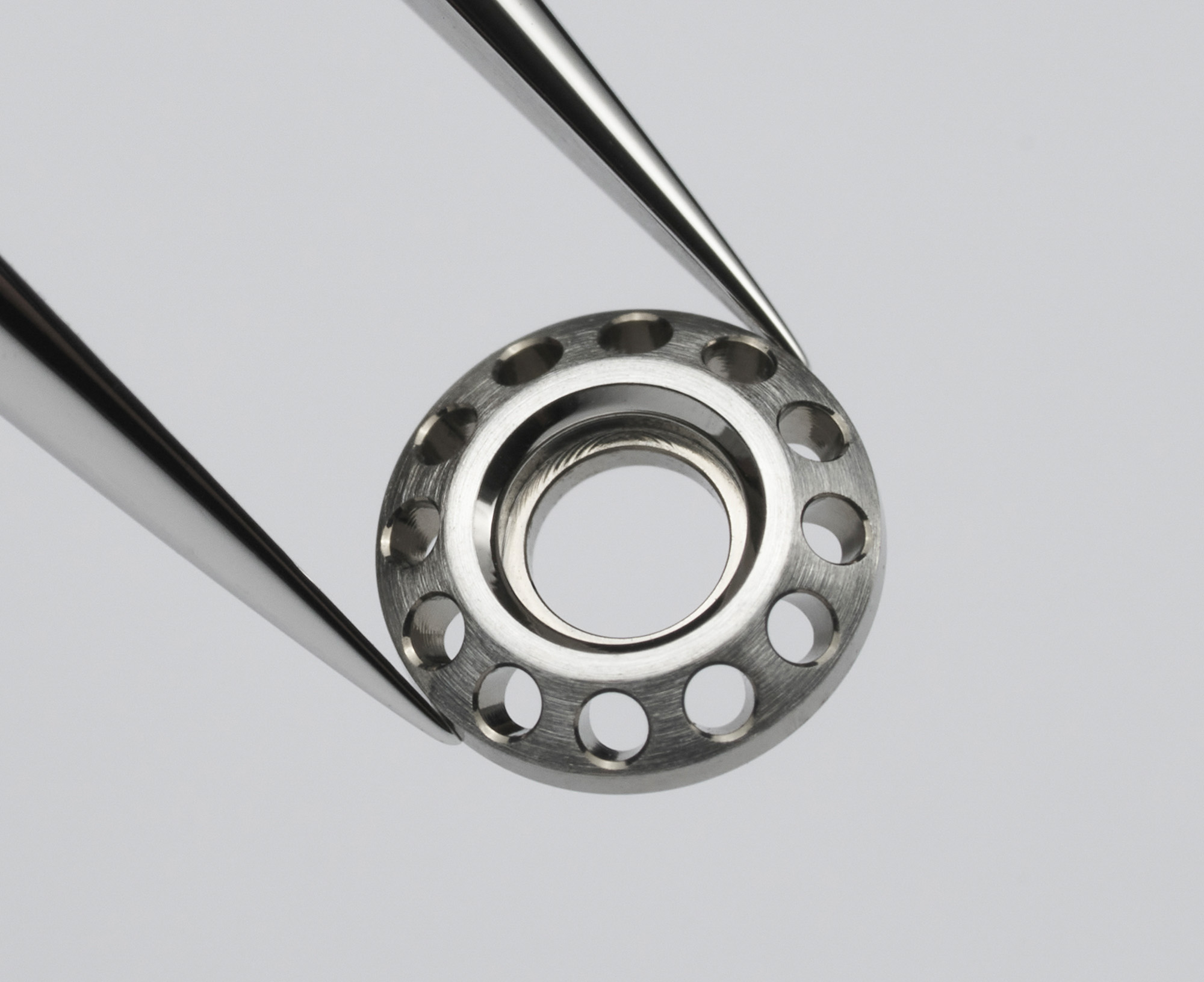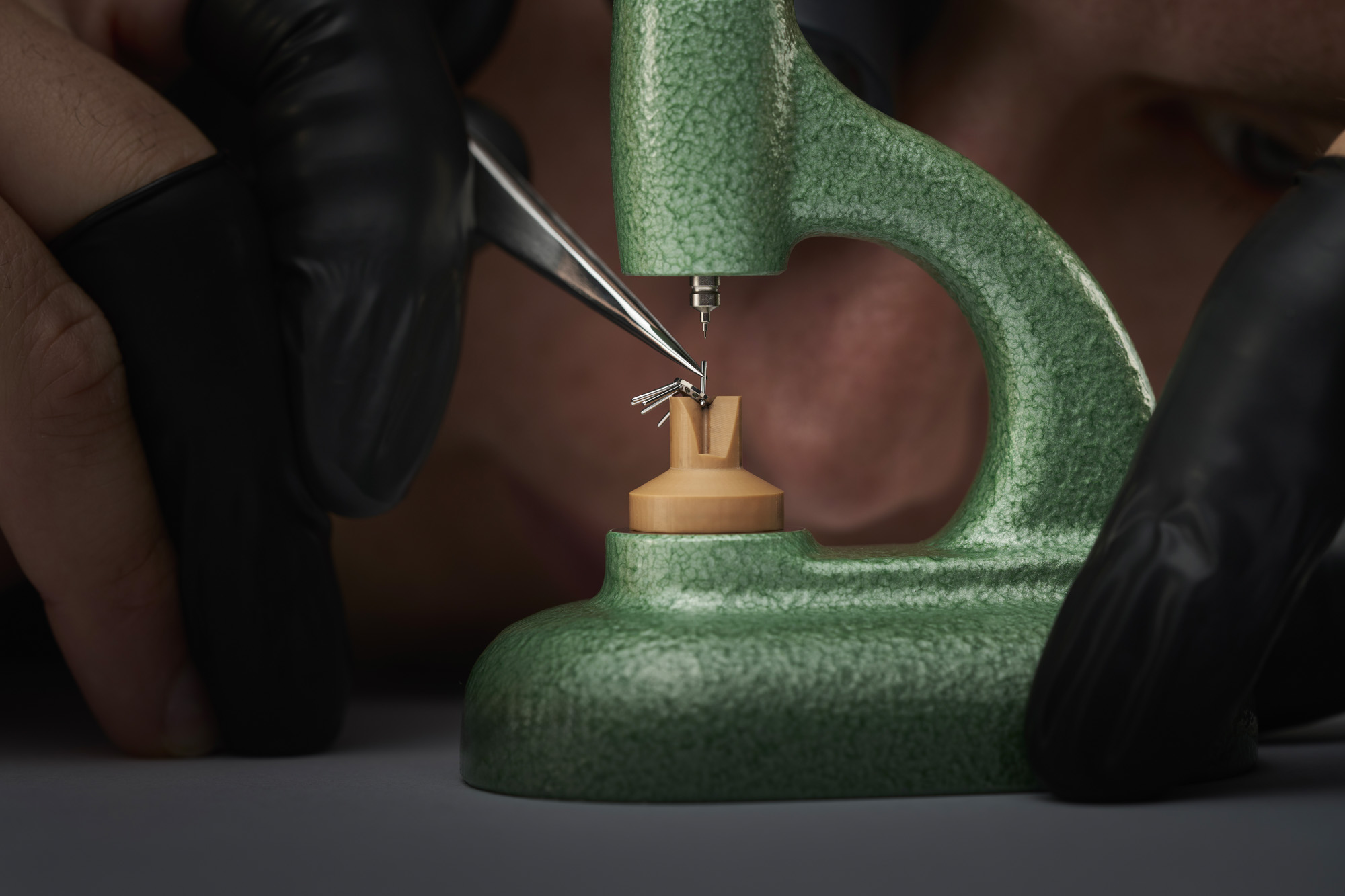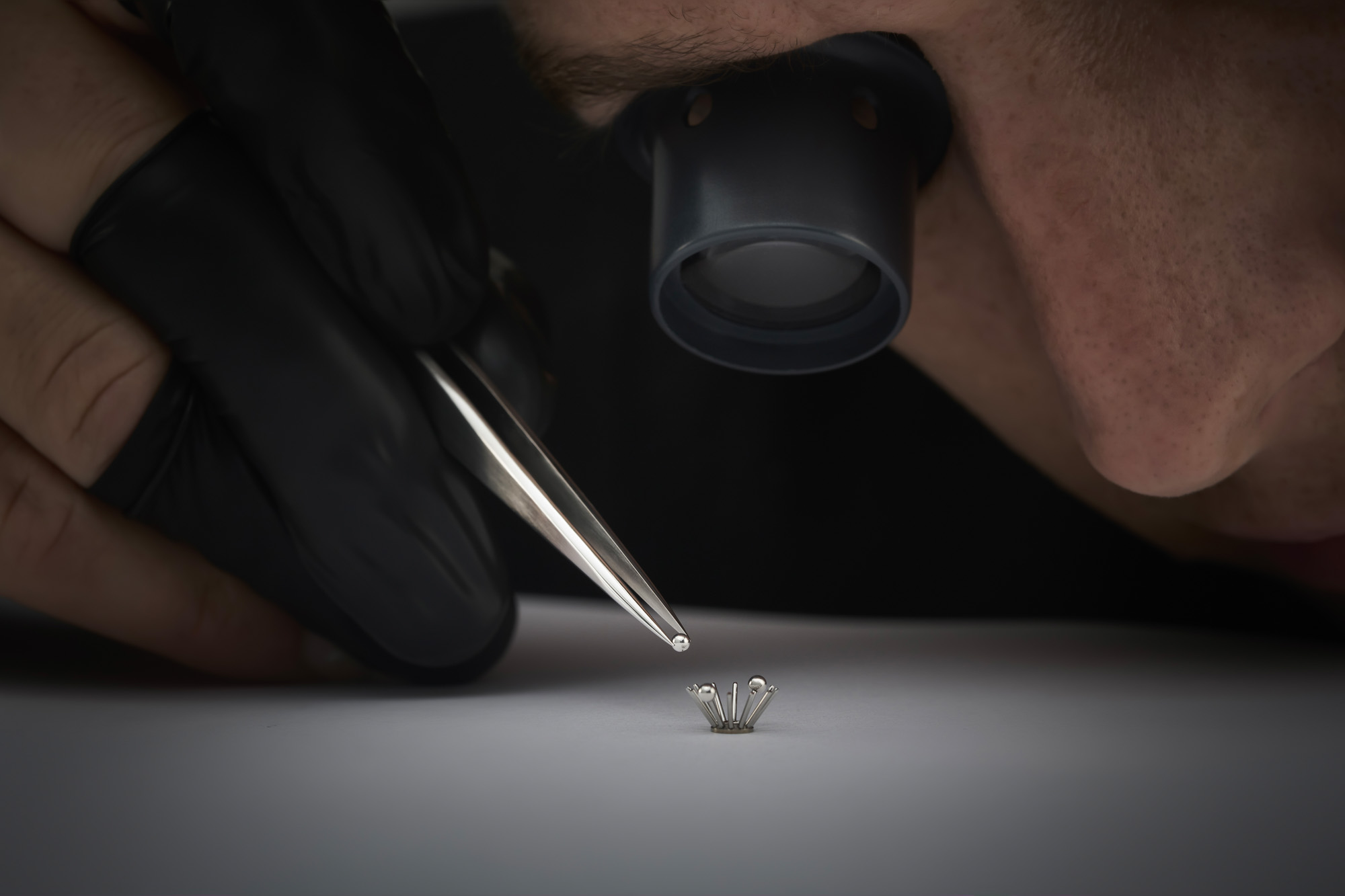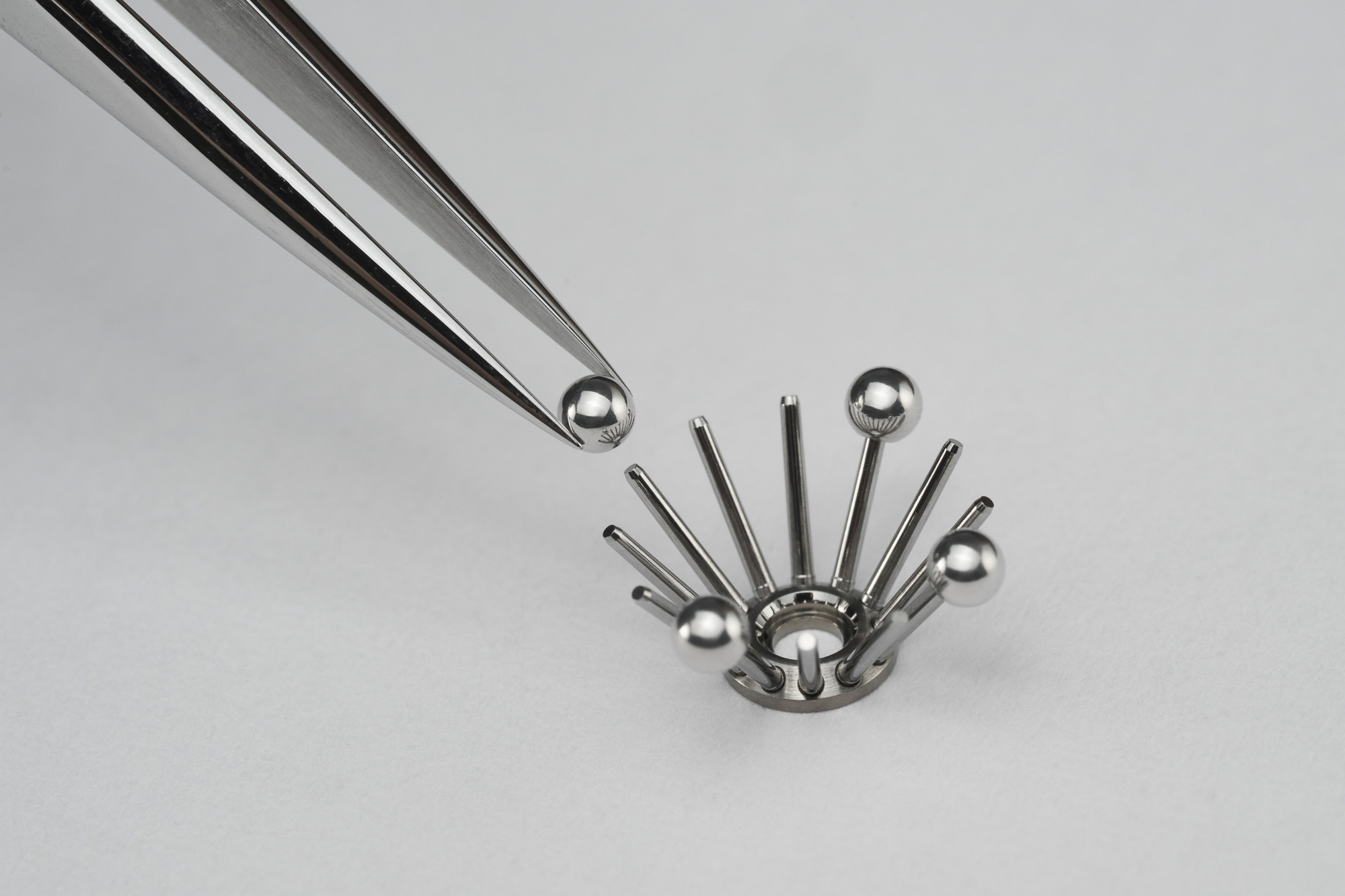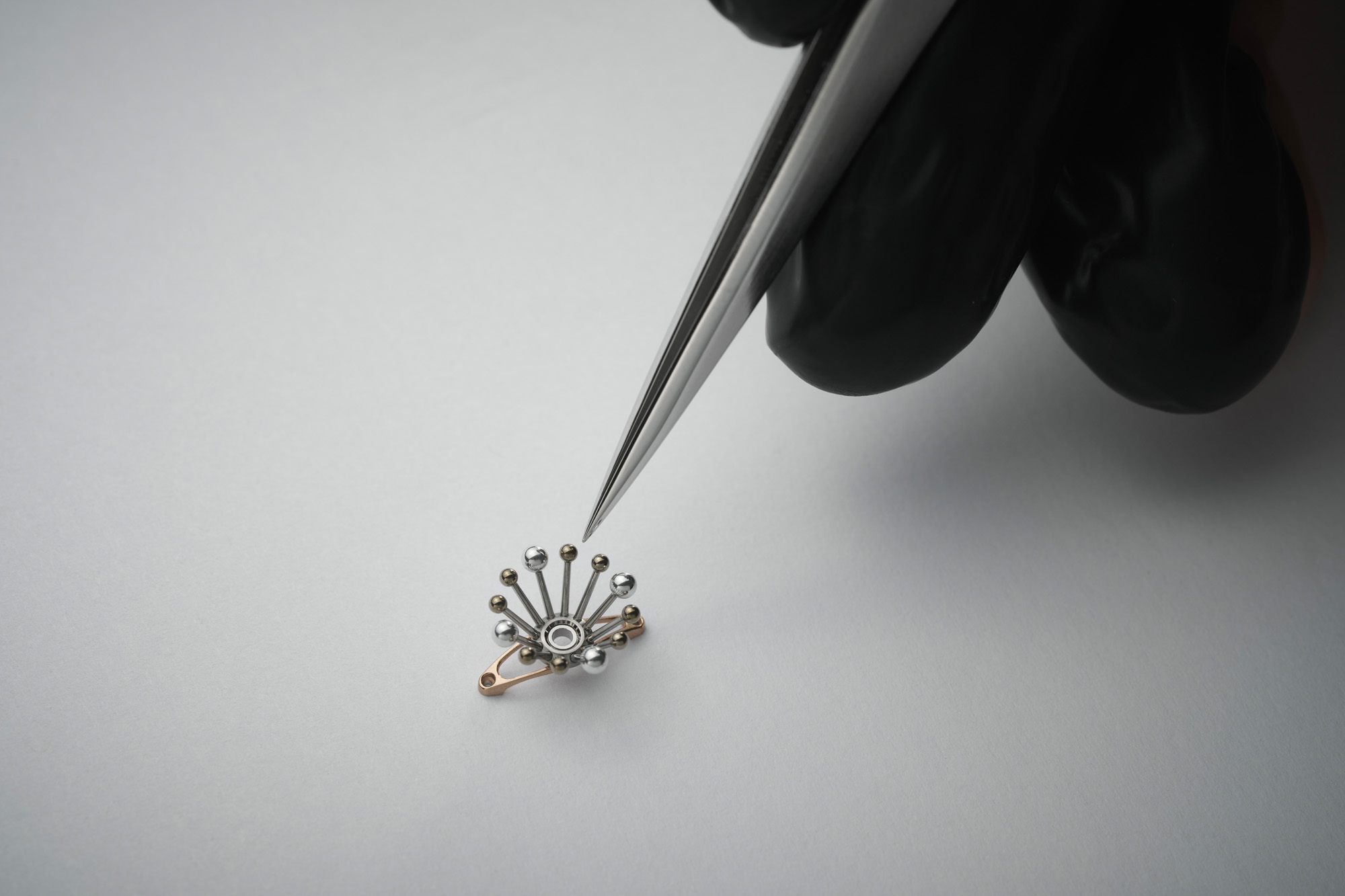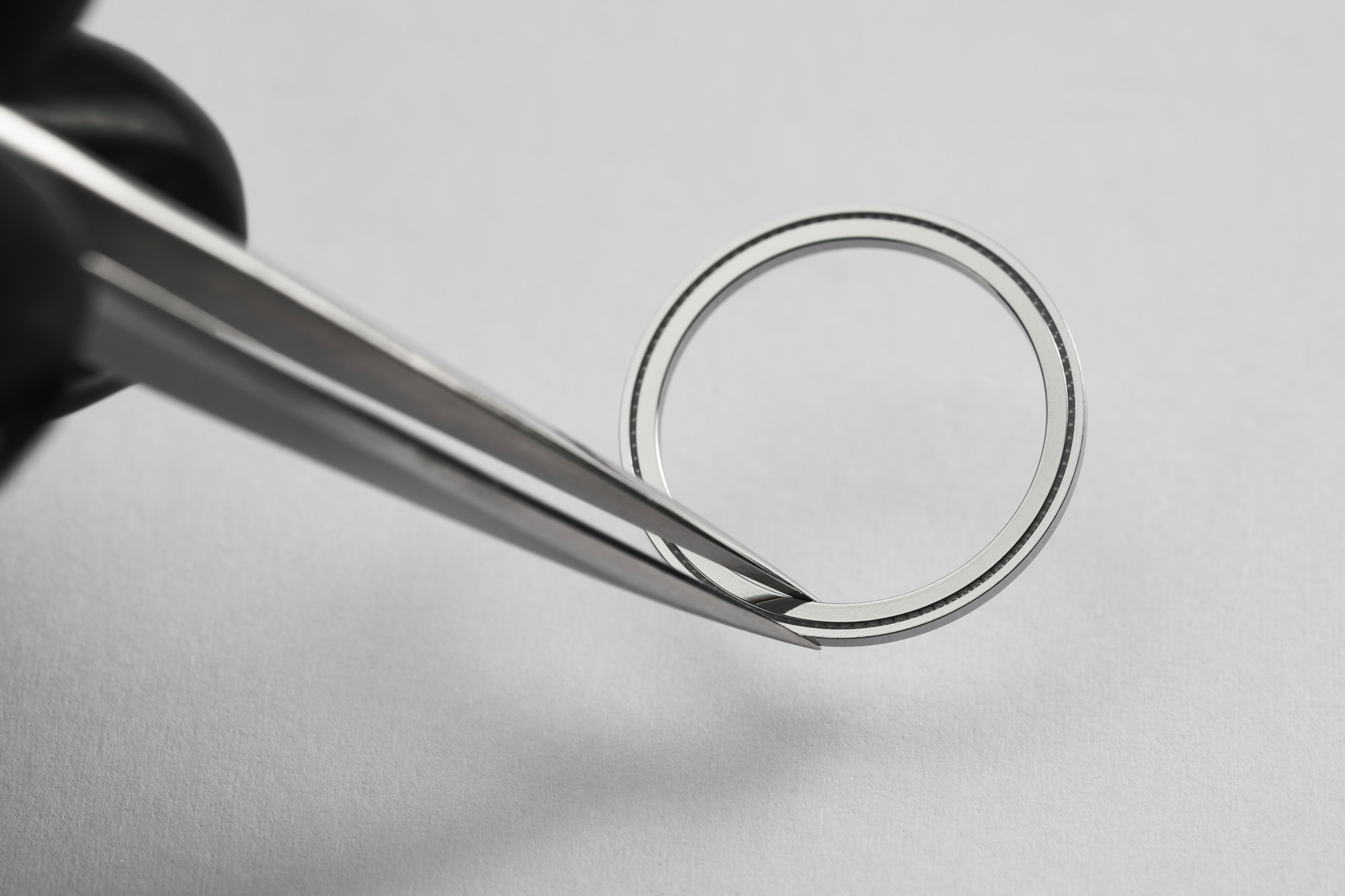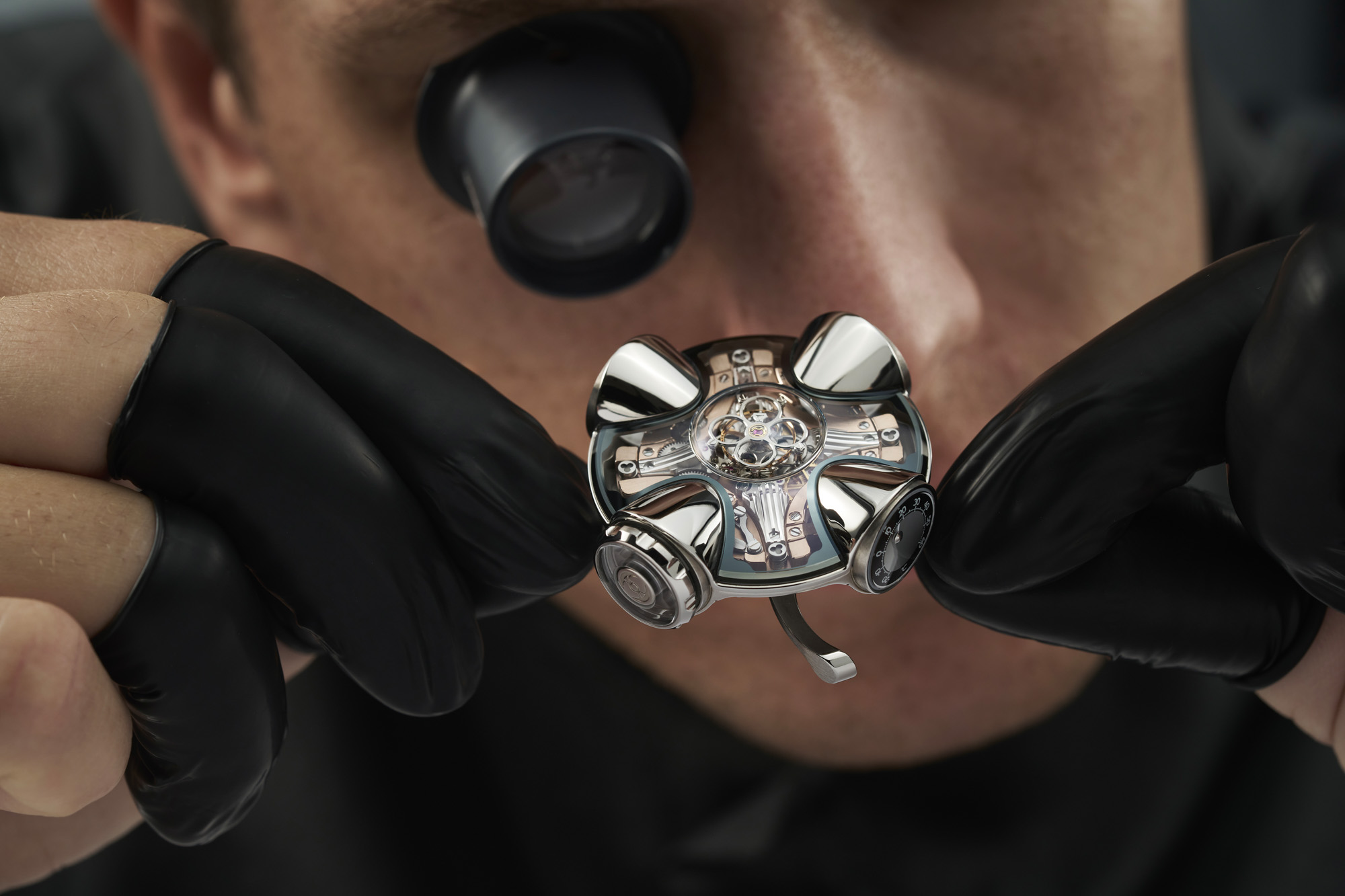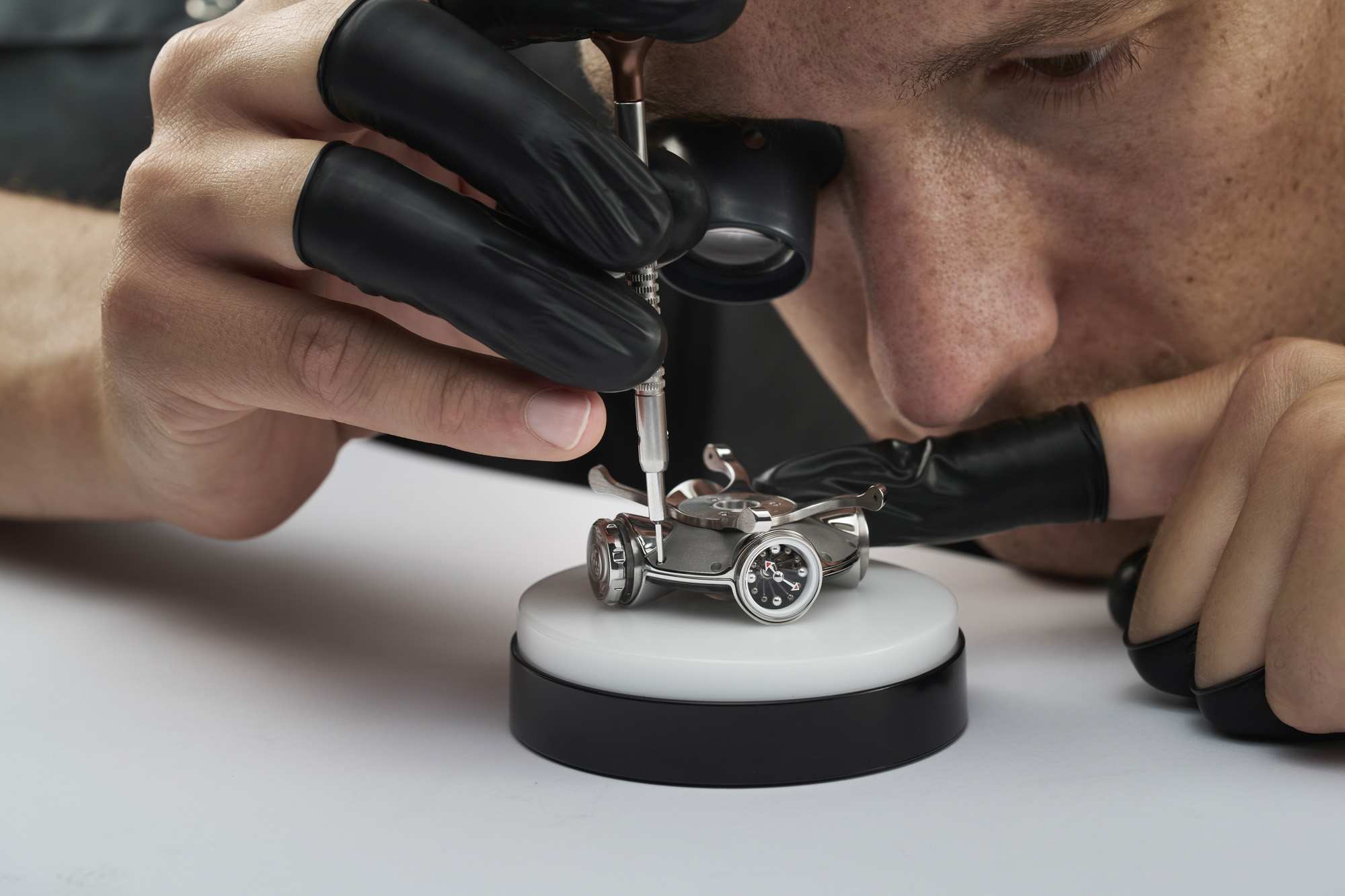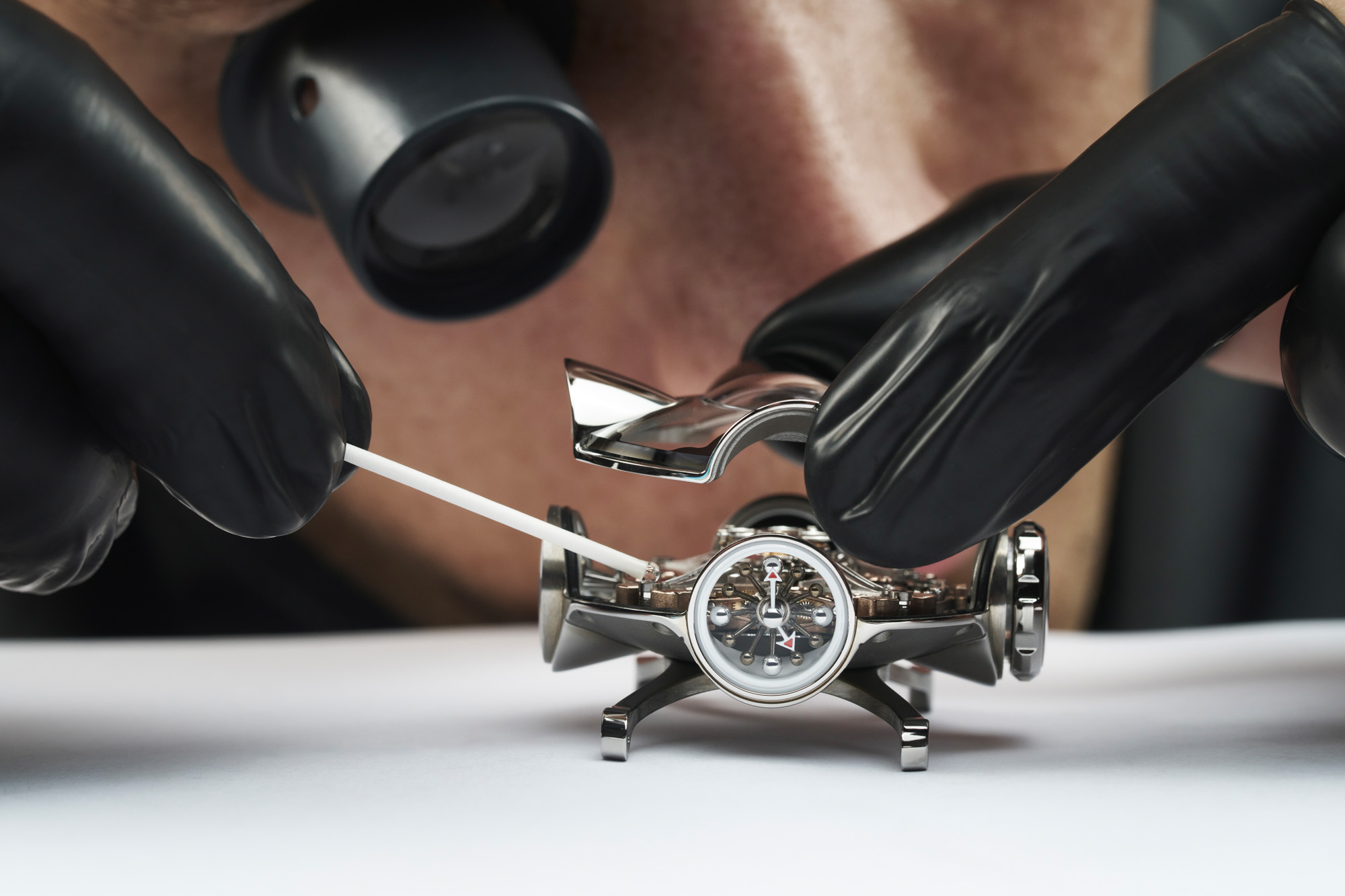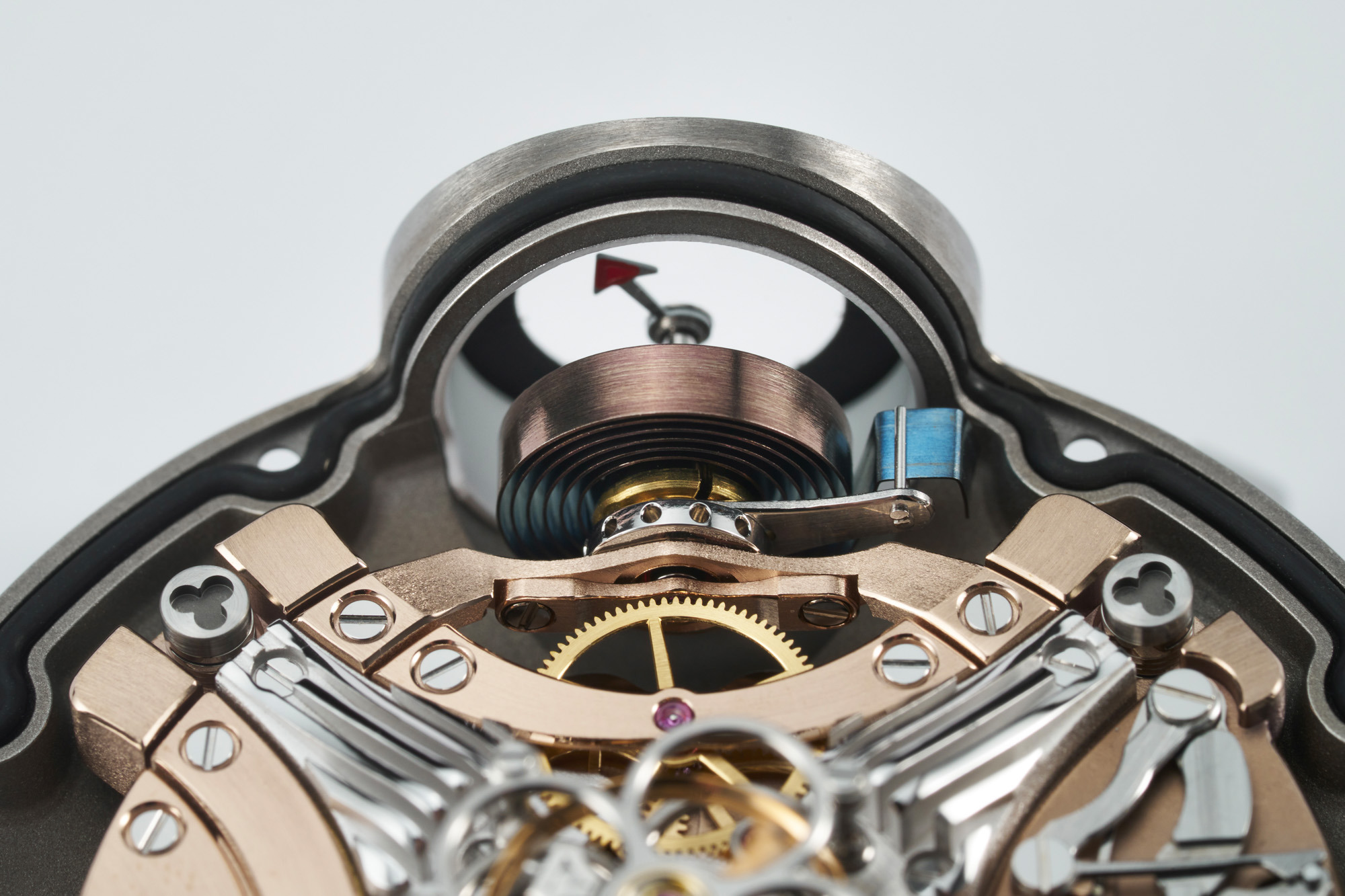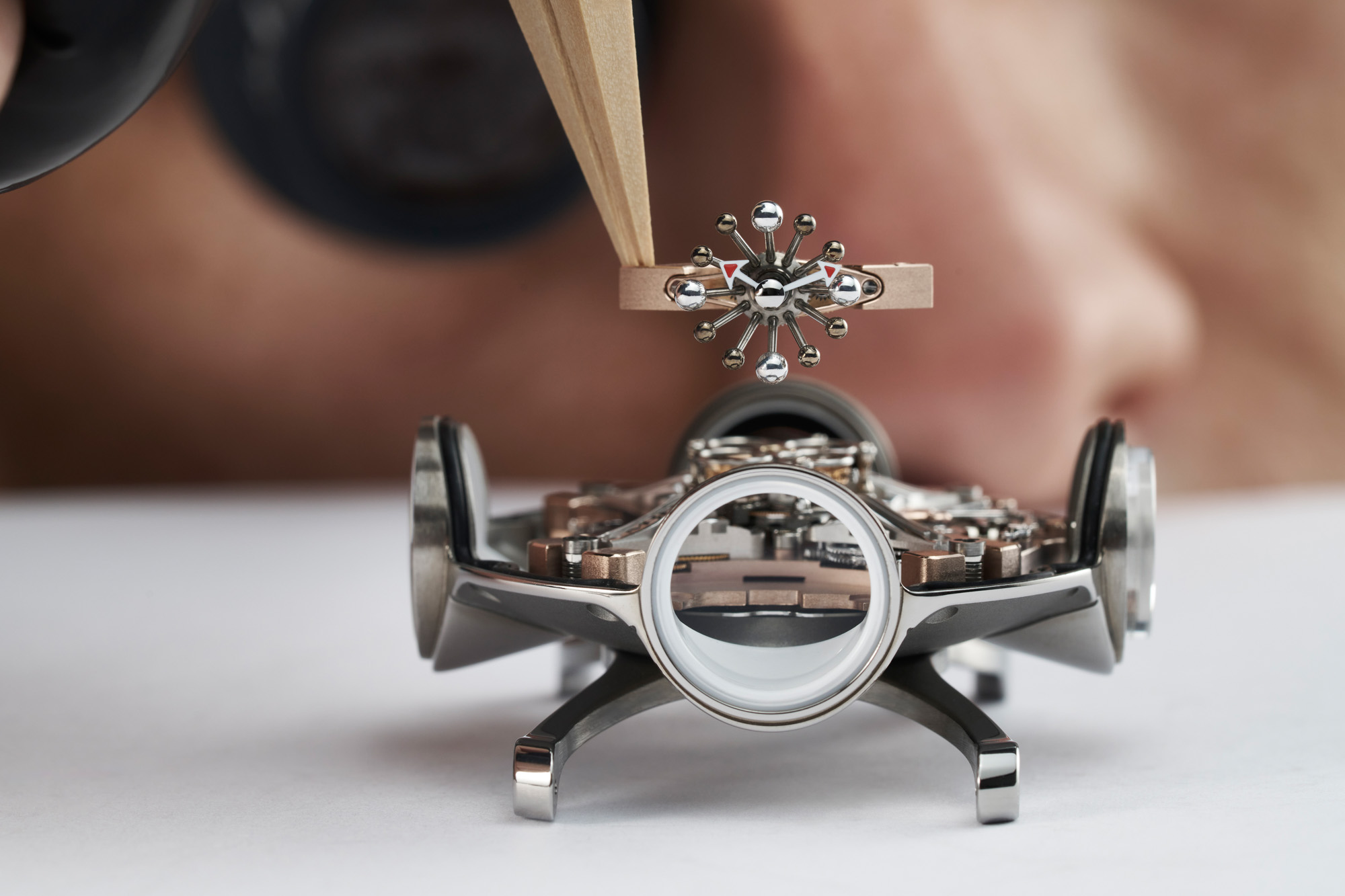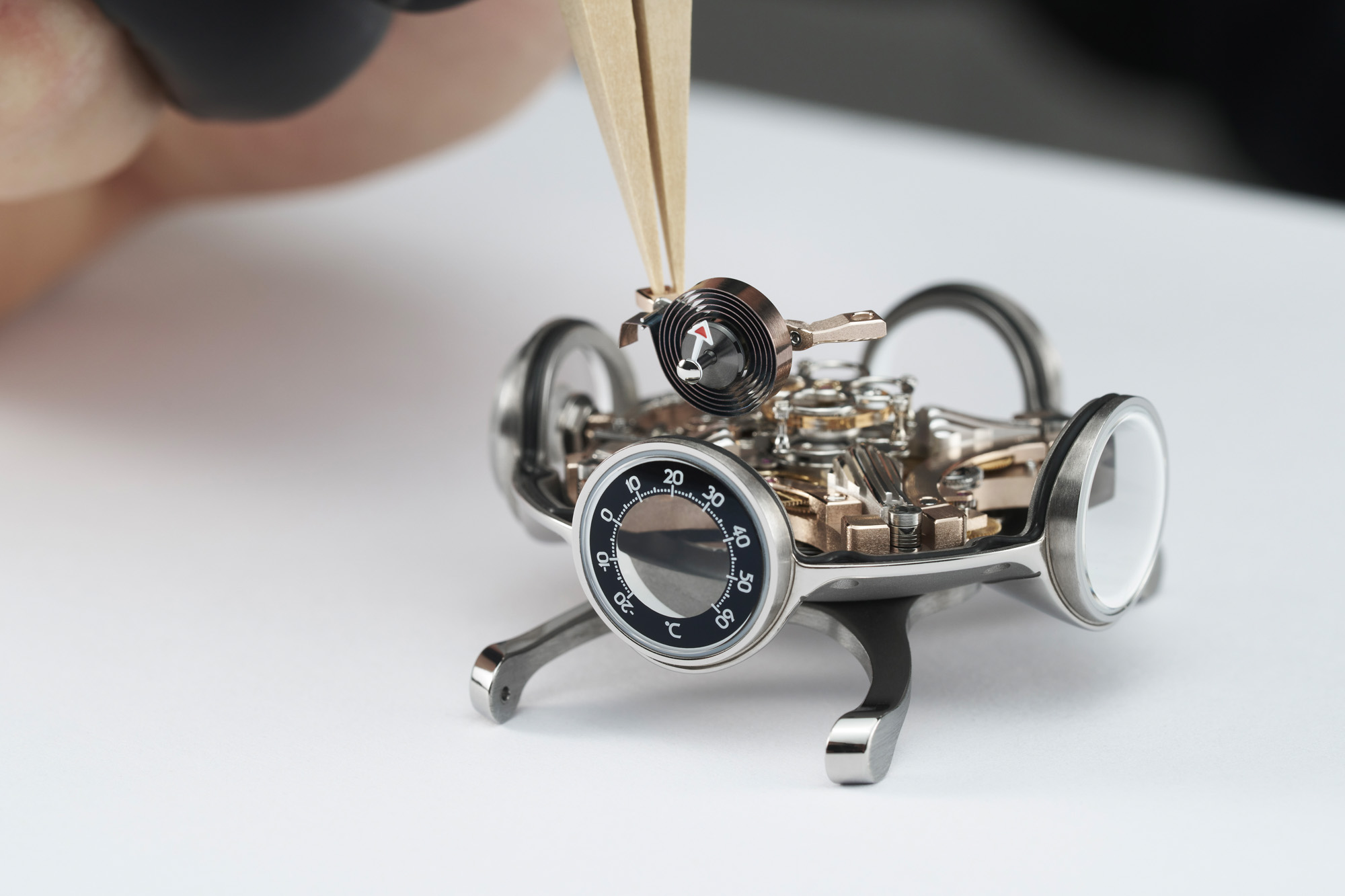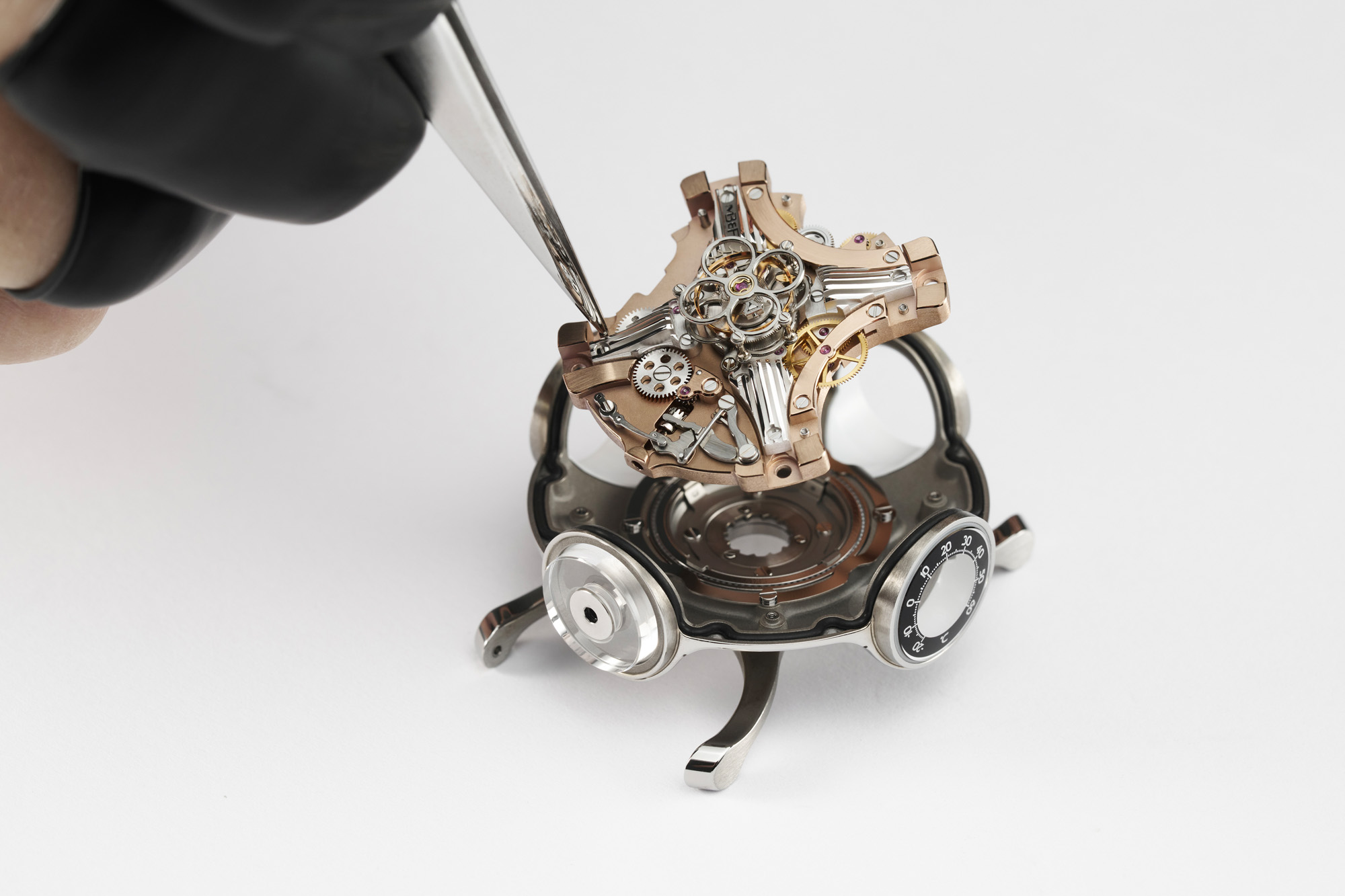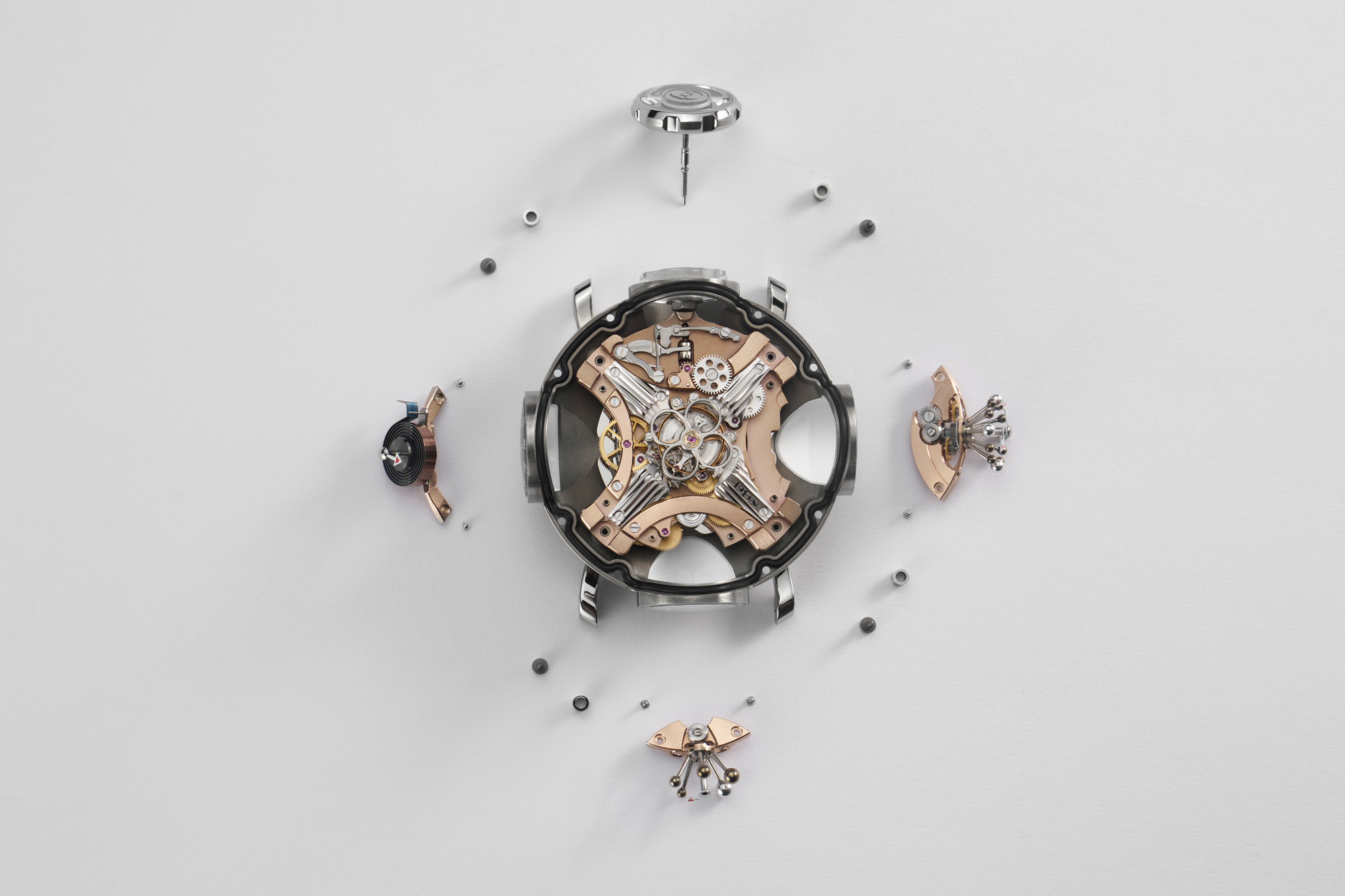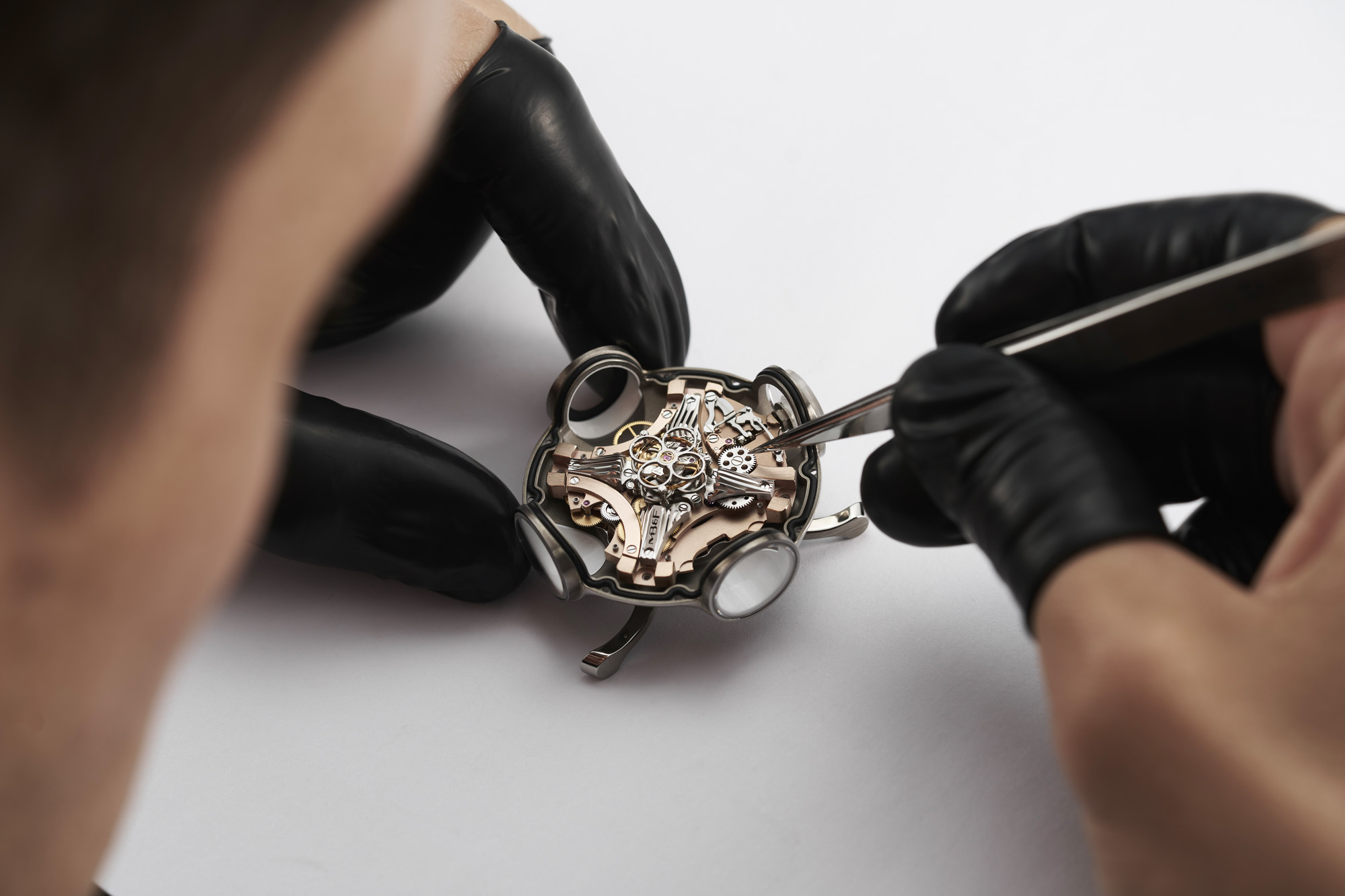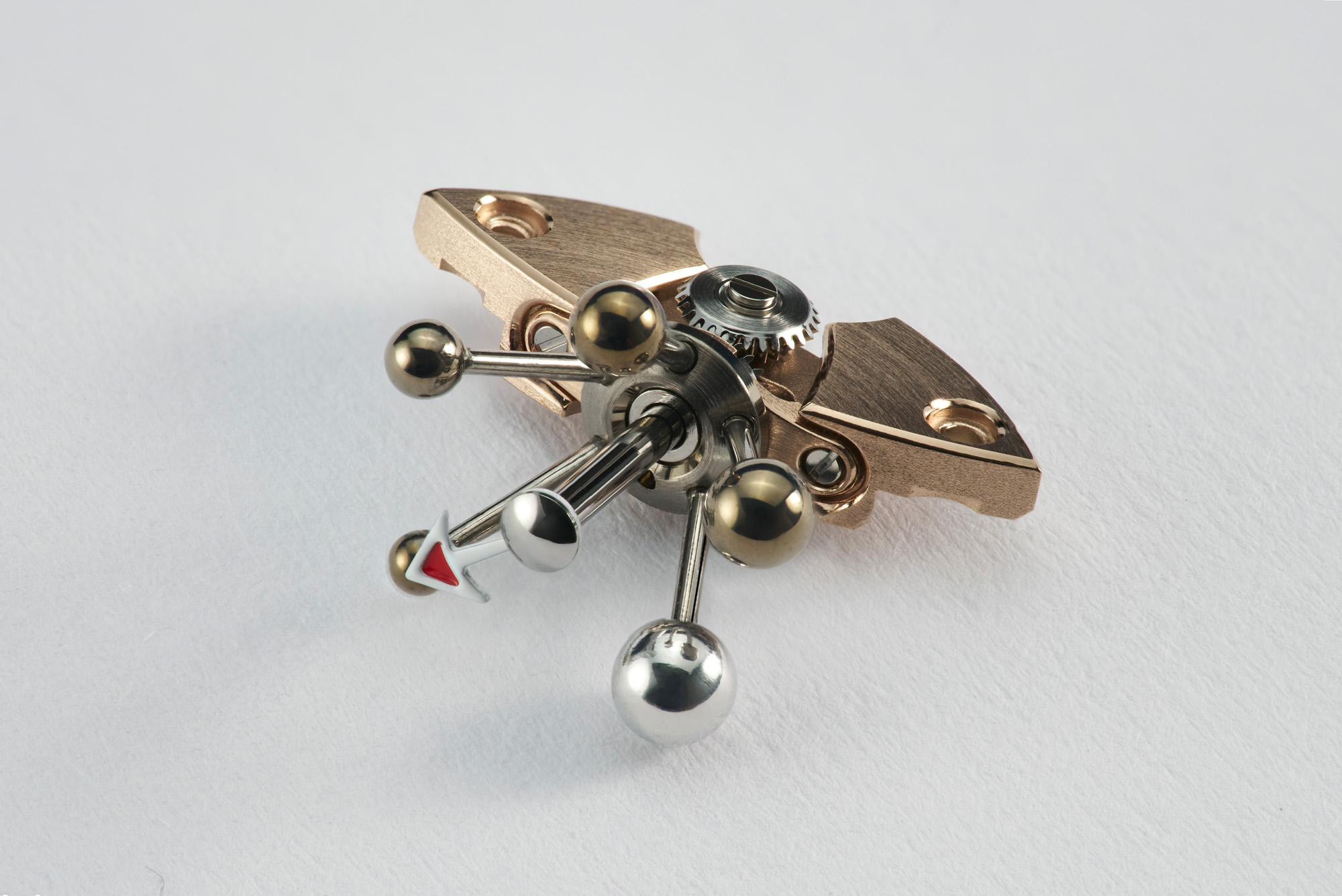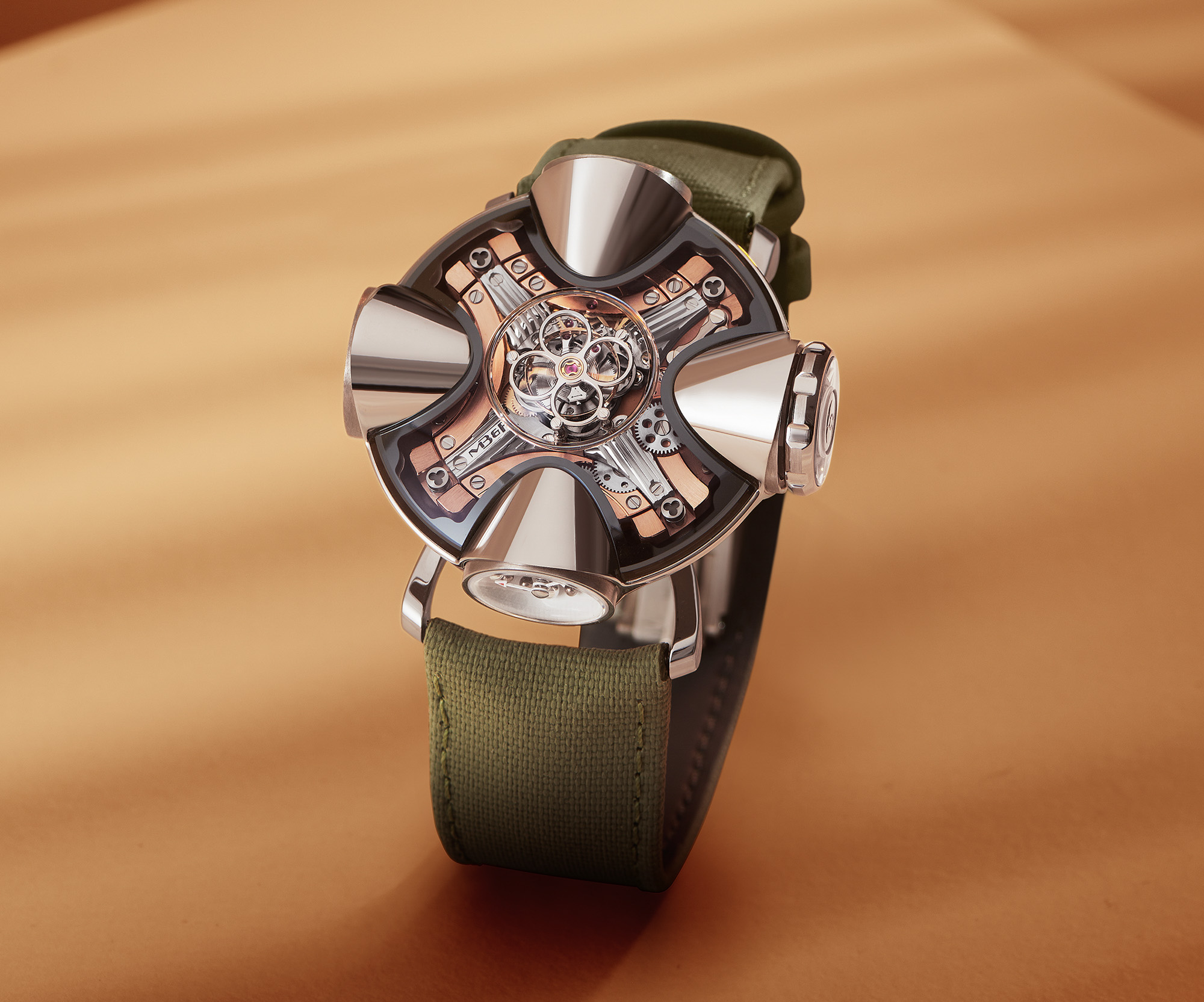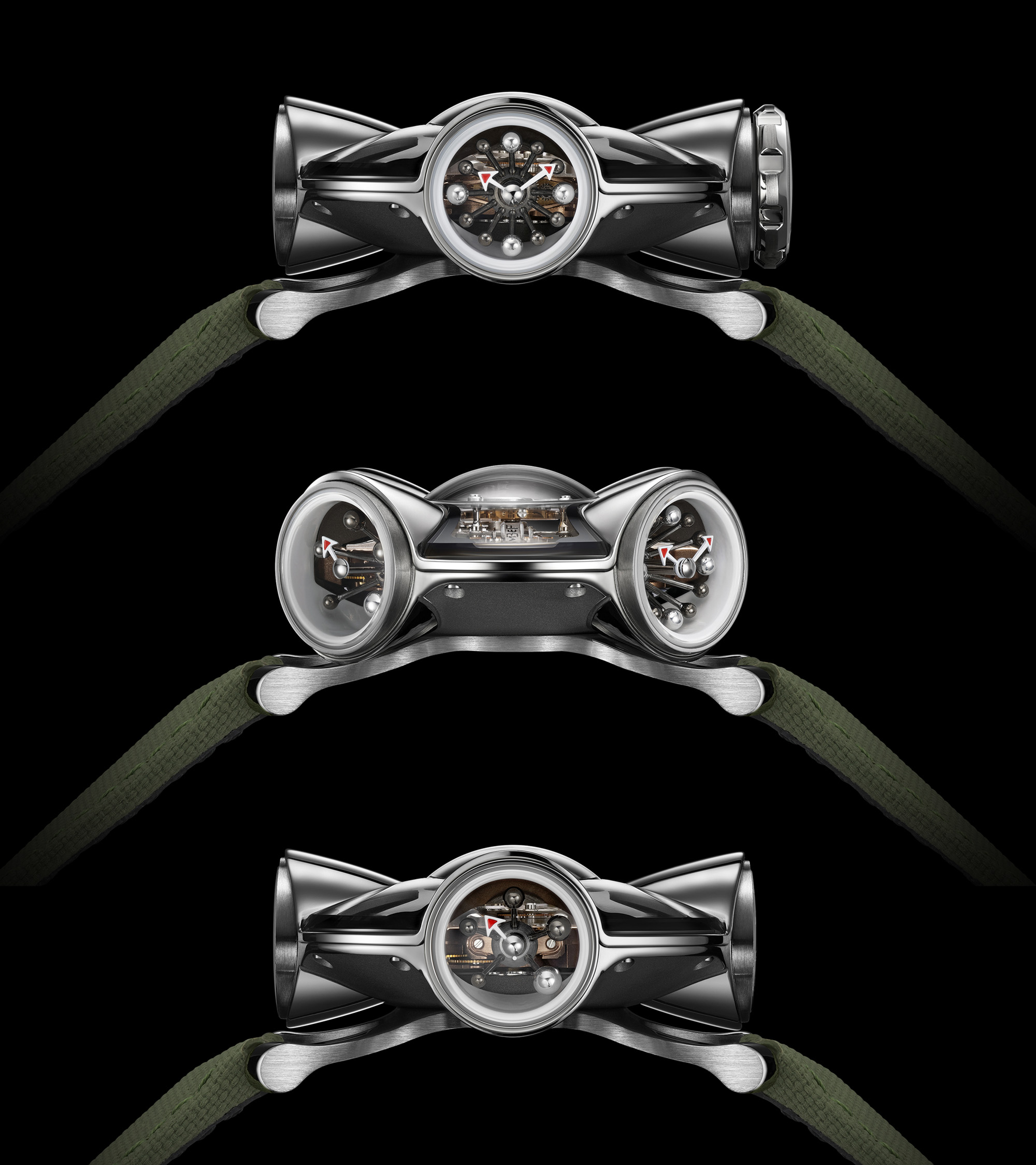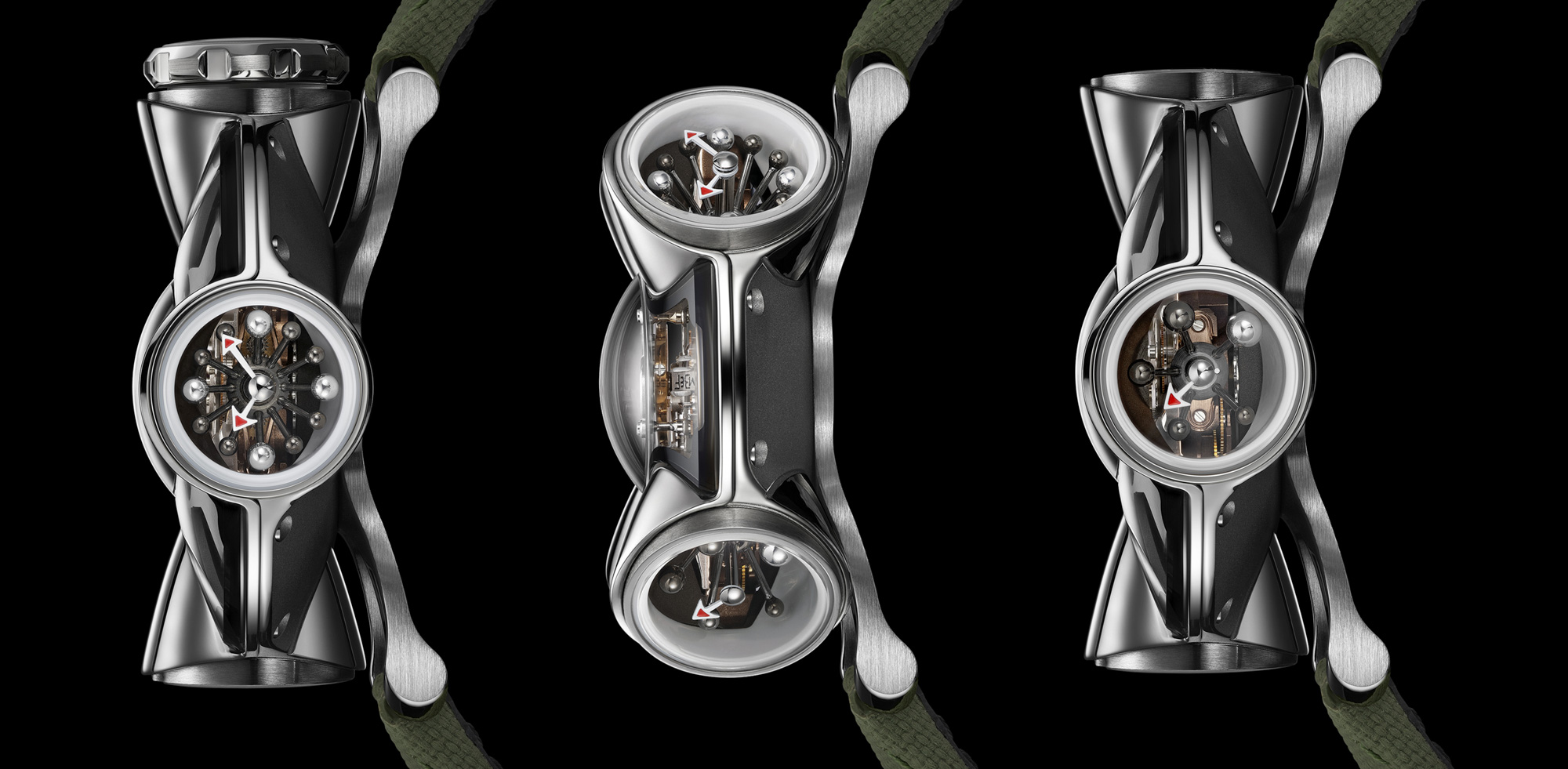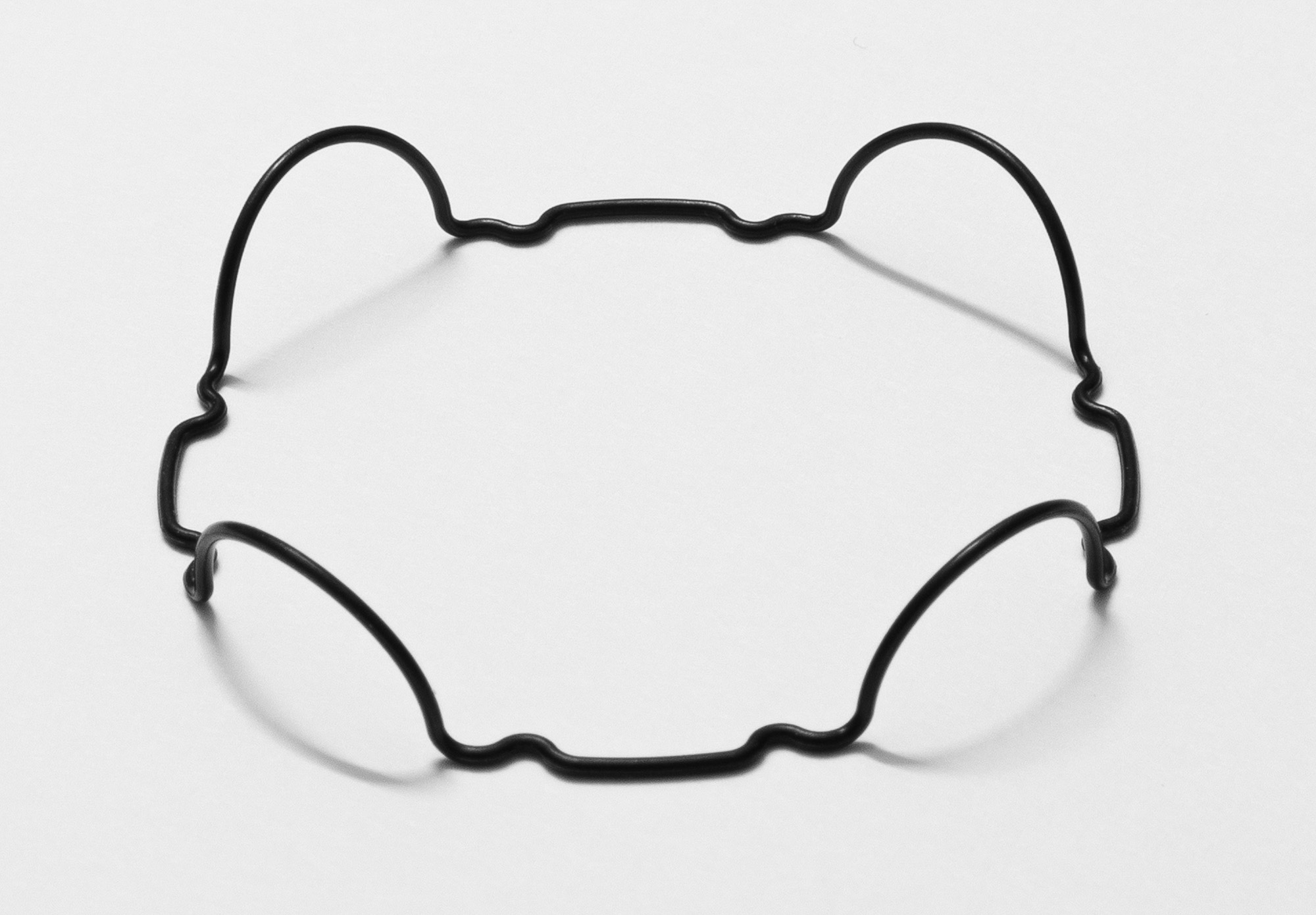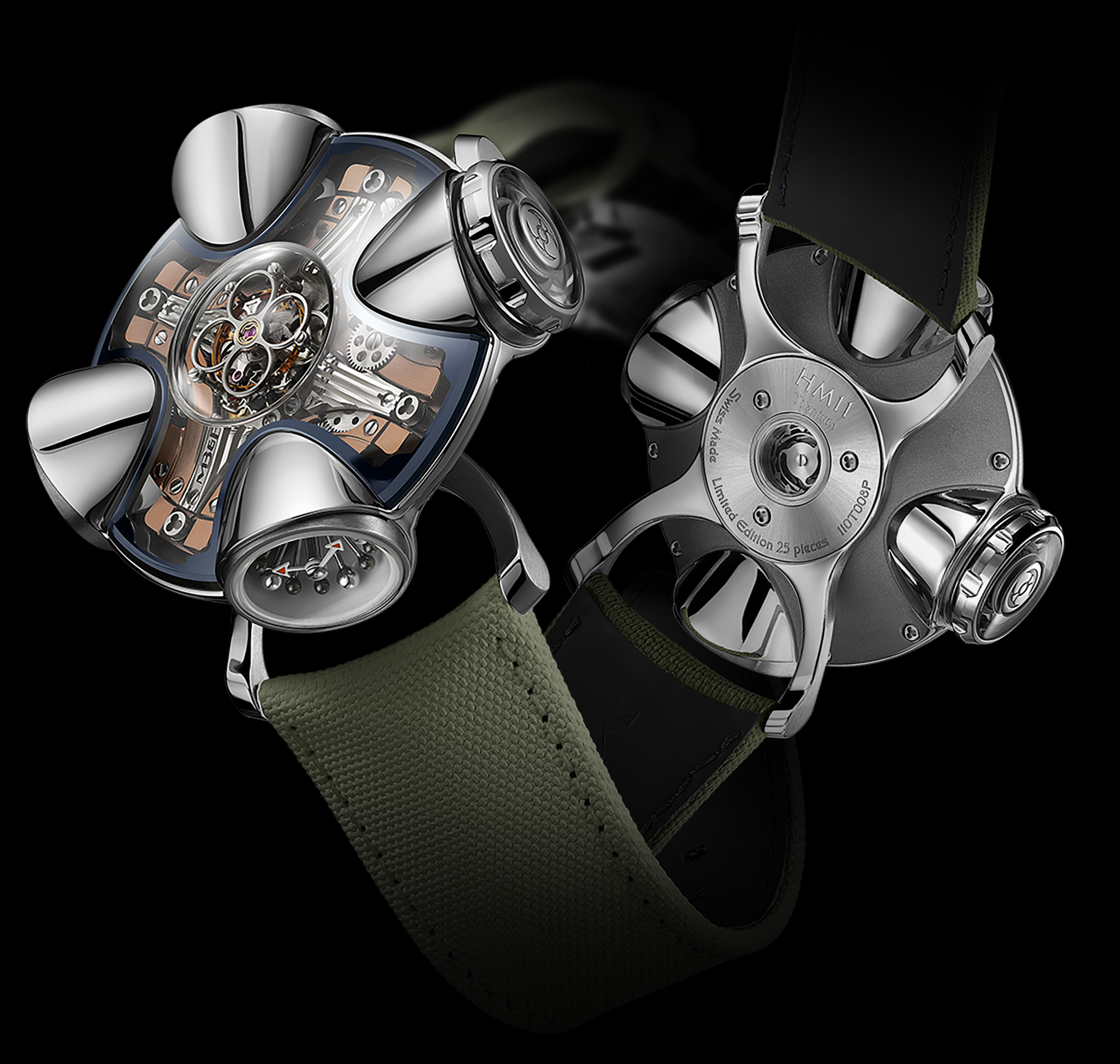
Conceived around 2018 and finally brought to life in 2023, the Horological Machine No. 11 is a return to form for MB&F and a celebration of the type of micromechanical engineering that has popularized high-end Swiss watchmaking. Max Busser, founder of MB&F, made the smart decision to fully acknowledge the connection between watchmaking and structural architecture with the HM11 timepieces. For many years I have had discussions with watchmakers and designers about the interesting parallels between architecture and watchmaking. While there are clear differences between the two fields, there are also many similarities. Most important to me for this discussion is how we appreciate buildings both small and large in similar ways, and how watchmaking and architecture are intrinsically linked.
A watchmaker once told me that he imagined being tiny in size, inside of his own watch. To him, the tiny version of himself needed to feel as though he would be as comfortable and impressed in the watch as he would be in a beautifully decorated and built habitation structure. Even though the shapes, textures, and colors on the inside and outside of a watch are very small compared to an actual building, they need to be of a requisite quality and aesthetic shape that a tiny observer would see them as being inviting and attractive — akin to being in a full-sized human structure. This concept was eye-opening to me because it helped me understand what our eyes and minds seek in appreciating even small functional/mechanical spaces. I now observe most watches as being akin to tiny buildings, and the MB&F HM11 simply builds on that fact and expands it for a larger audience of timepiece aficionados.
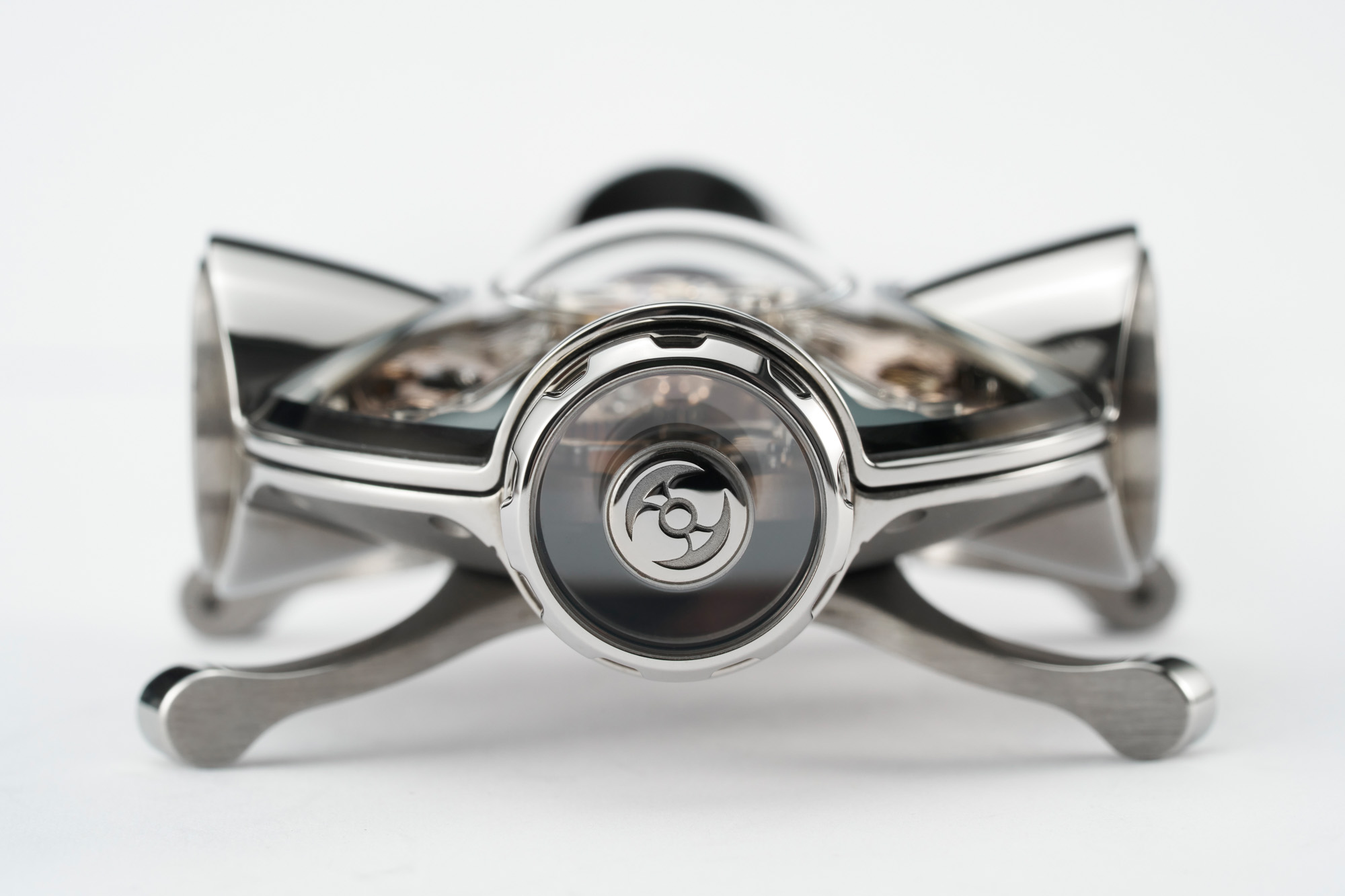
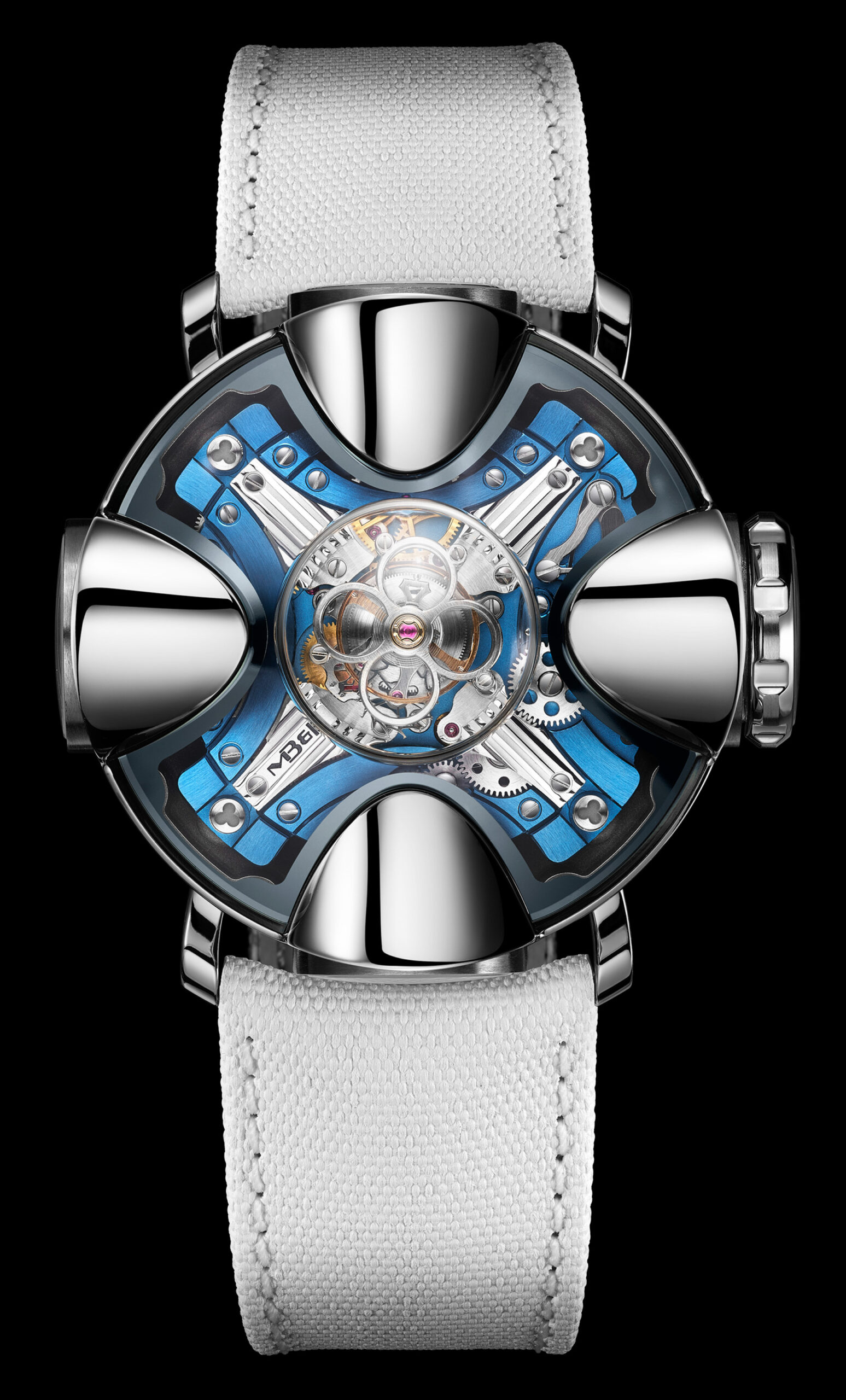
What sort of house is the MB&F HM11? Busser again worked with master designer Eric Giroud for the Architect timepiece. The duo were inspired by futuristic home designs of mostly the 1960s, often those designed in Switzerland. This was an interesting era in architecture because many new concepts were entering the building space including inspiration from space travel, modern materials such as plastics, new manufacturing techniques, and of course modular design considerations. Architecture was also more interested in fluid form and more gracefully combining human structures with the natural world. Those familiar with the architecture of that era will clearly see how the aesthetics of the MB&F HM11 fit into that design language. The one design element of the HM11 Architect — for me — that ties the watch to this era is the actual watch dial itself. Using small orbs on rods to create the hour markers, the dial to indicate the time echoes larger wall clocks of similar design that helped popularize the 1960s era.
On the wrist, the MB&F HM11 is a bit of a novel experience because the entire case is designed to pivot. That turning/pivoting action does two things. First, it allows you to have one of the four sides directly facing you. The time and other indication information is all read on from the side, something which fans of many previous MB&F watches are accustomed to. The four dials include one that indicates the hours and minutes, one that is a power reserve indicator, one that is a temperature indicator, and one that is a special exhibition crown. Another purpose that turning the case serves is to manually wind the watch. Compared to turning a crown, pivoting the entire case allows for high-torque winding of the mainspring barrel. It will also prove fun for wearers to play with the case in this way as fidget watches are very popular. This high-efficiency manual winding system requires just ten turns of the case to fully wind the 96 total hours of power reserve available in the movement.
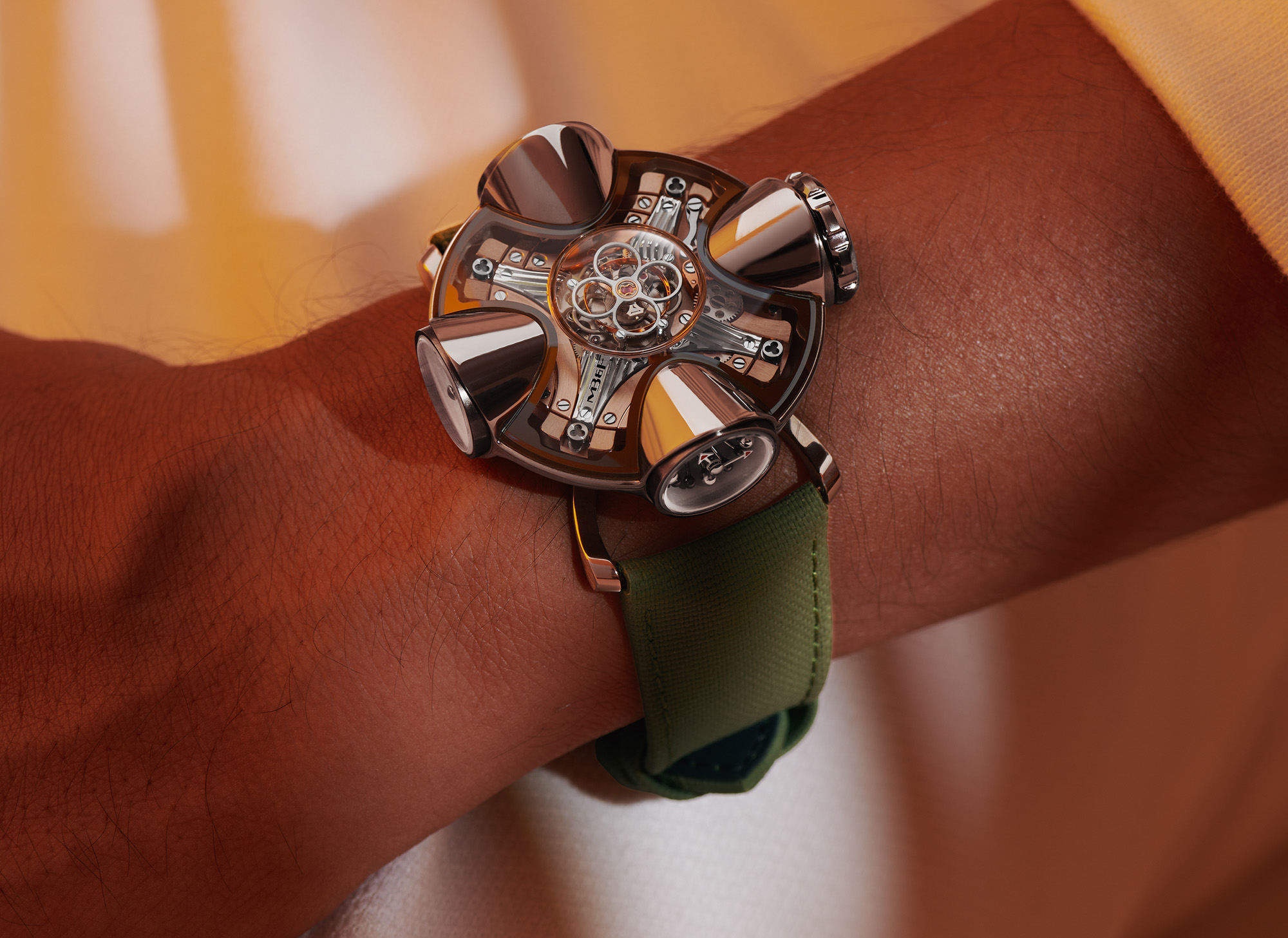
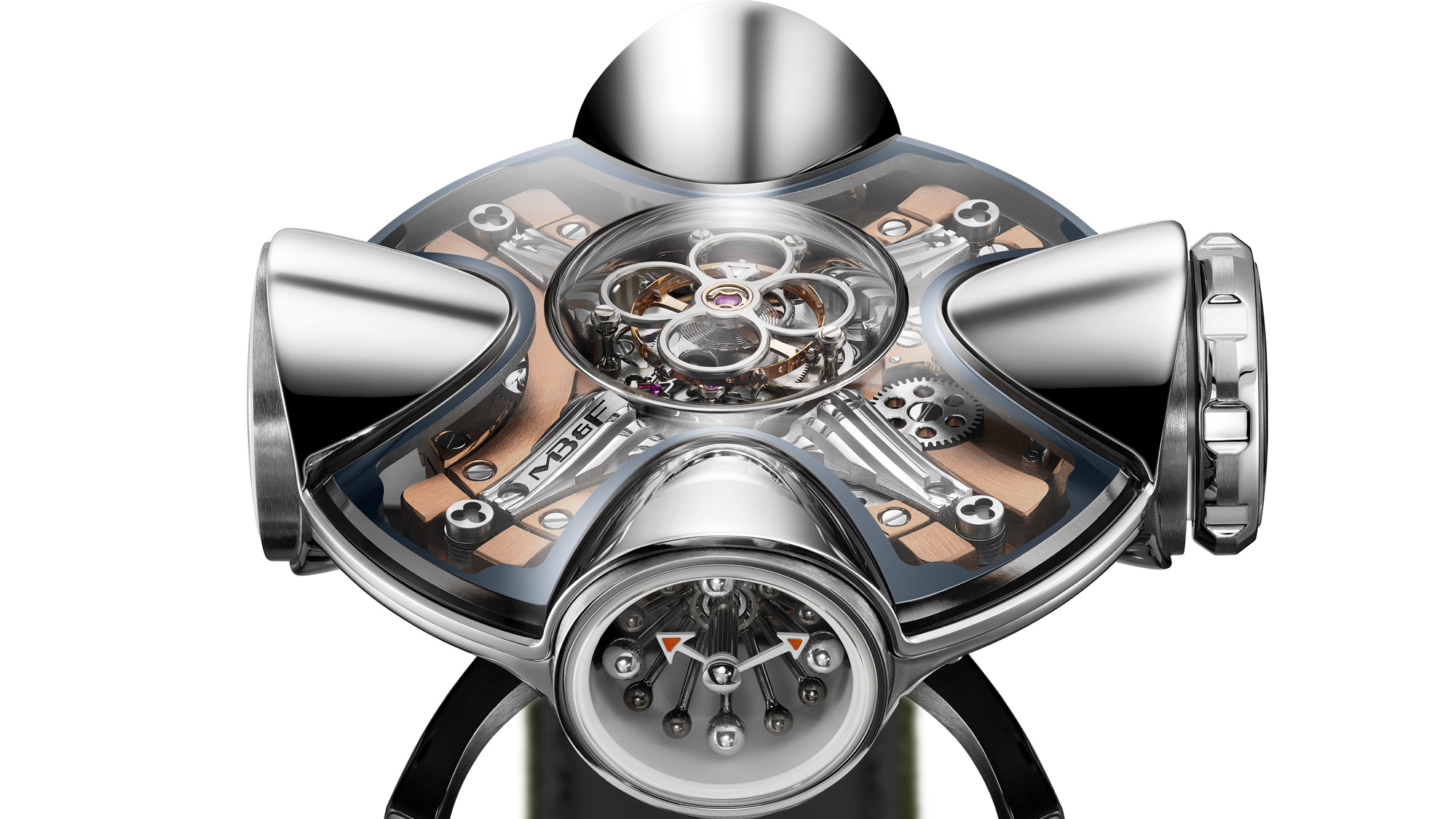
When viewing the HM11 Architect watch from the top, you see a flying tourbillon with a clover-style tourbillon cage that matches the quadrant look of the overall case. The regulation system operates at 2.5Hz (18,000 bpm) and the movement in general is comprised of 364 parts. So much effort went into not only creating a visually attractive and radially symmetrical system but also into ensuring that the case and movement are practical to wear and operate. That included developing a complex system of eight gaskets in the 92-part case as well as a ball-bearing system for the pivoting case to reduce long-term wear and tear. Even with all of that effort, the HM11 watch has just 20 meters of water resistance. That’s enough to warrant taking it off while washing your hands in my opinion, but more than enough to keep idle dust and moisture out of the case.
The new complication that we see in this watch compared to other MB&F watches is their take on the mechanical thermometer. These are rare in watches today but have a lineage going back hundreds of years. Thermometers in mechanical watches were less about measuring the environment’s current temperature, and more about what was going on inside of the watch. This is because compared to today, mechanical watches in the past were more greatly affected by differences in temperature, and thus knowing the temperature allowed the user to potentially better know how their watch was operating. Because thermometers in a watch measure the internal temperature, looking at them when a watch is on your wrist really just tells you the temperature of the watch, which is somewhere between your body temperature and that of the ambient environment. To best take a reading of the ambient temperature, you’d have to take the watch off for a while and let it adjust to the ambient temperature without being affected by your body heat. Why does this complication make sense in the HM11 Architect? Probably because it was and is common for homes to have thermometers in them. The range of the thermometer in the HM11 watch goes from -20 degrees centigrade to +60.
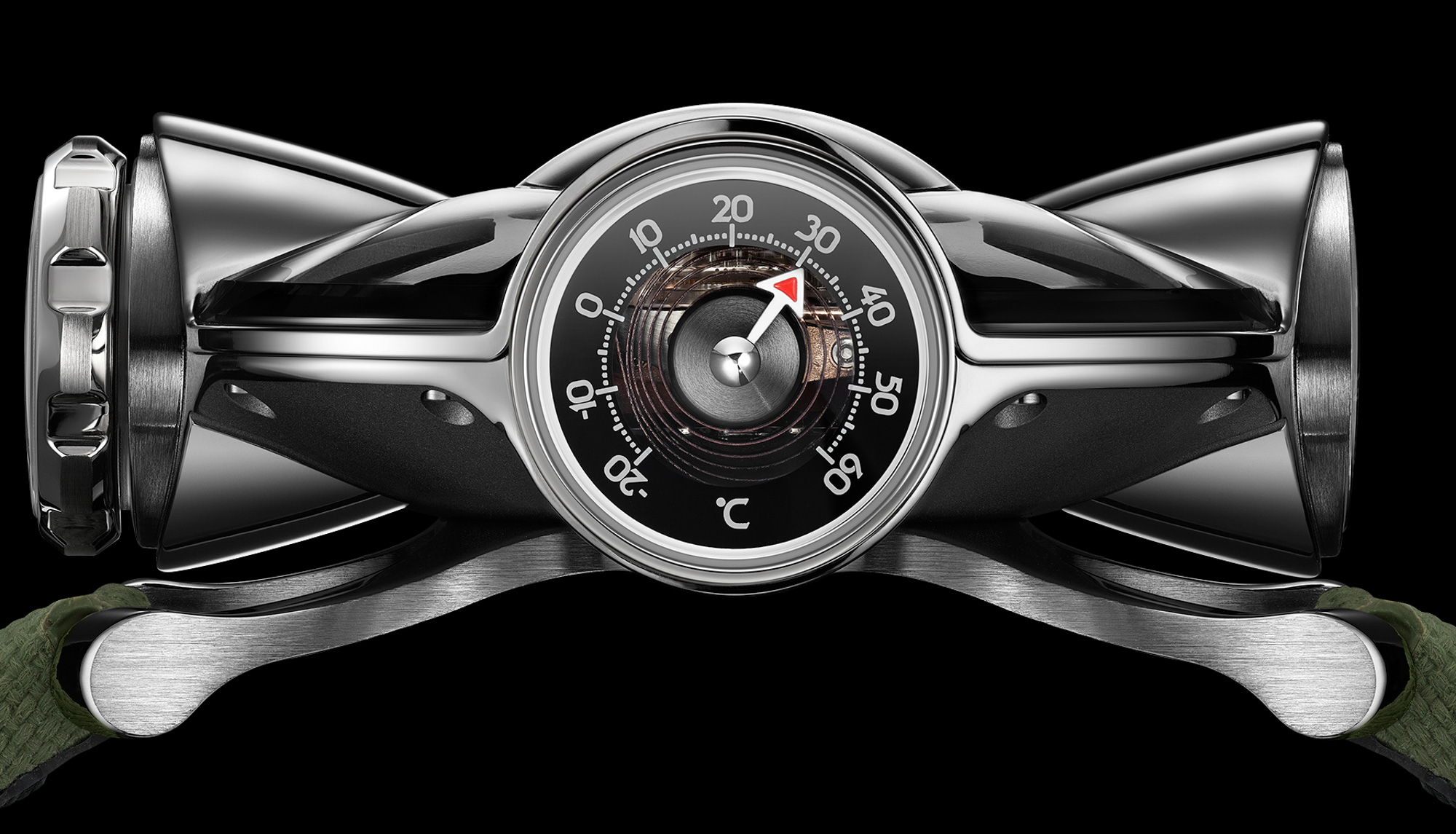
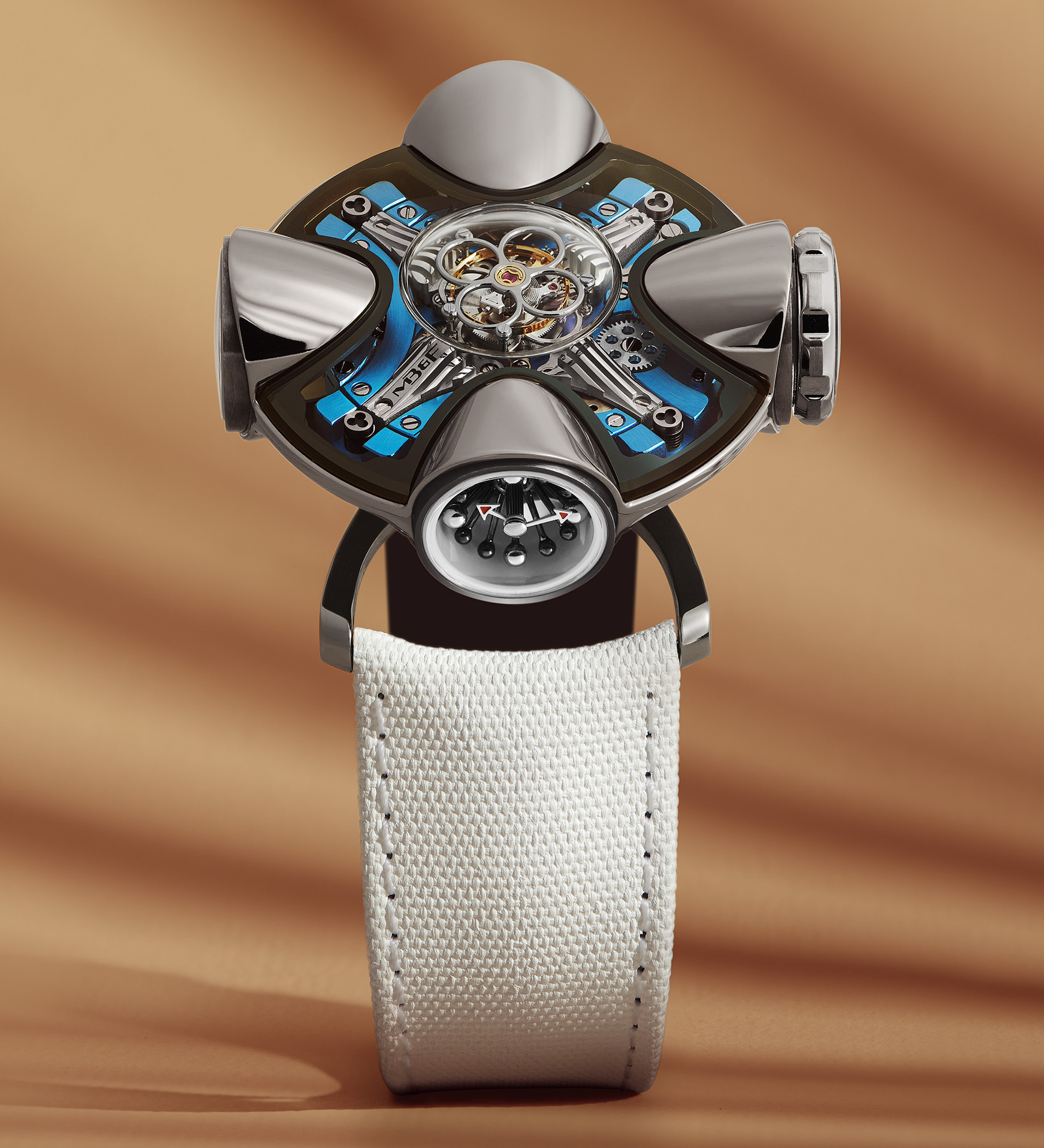
The MB&F Horological Machine No. 11 has a case that is 42mm wide and 23mm thick, mostly produced from grade 5 titanium and sapphire crystal. As is common with other MB&F HM collection watches, the movement and case were designed to go together harmoniously. Here a major emphasis is on the “windows” which allow for a look into the movement from many angles, including through the special large-sized crown. Attached to the case is a textured rubber strap, connected to curved lugs which are designed to allow for maximal wearing comfort despite the odd proportions of the HM11 object.
MB&F launches the HM11 in two limited edition versions, both in titanium. One has a blue-colored mainplate with a matching white strap, and the other has a red gold dial mainplate and is paired with a khaki green strap. Both versions will be produced as a limited edition of 25 pieces each (50 pieces total between the two current versions), with a retail price of $230,000 USD. Learn more at the MB&F watches website.

